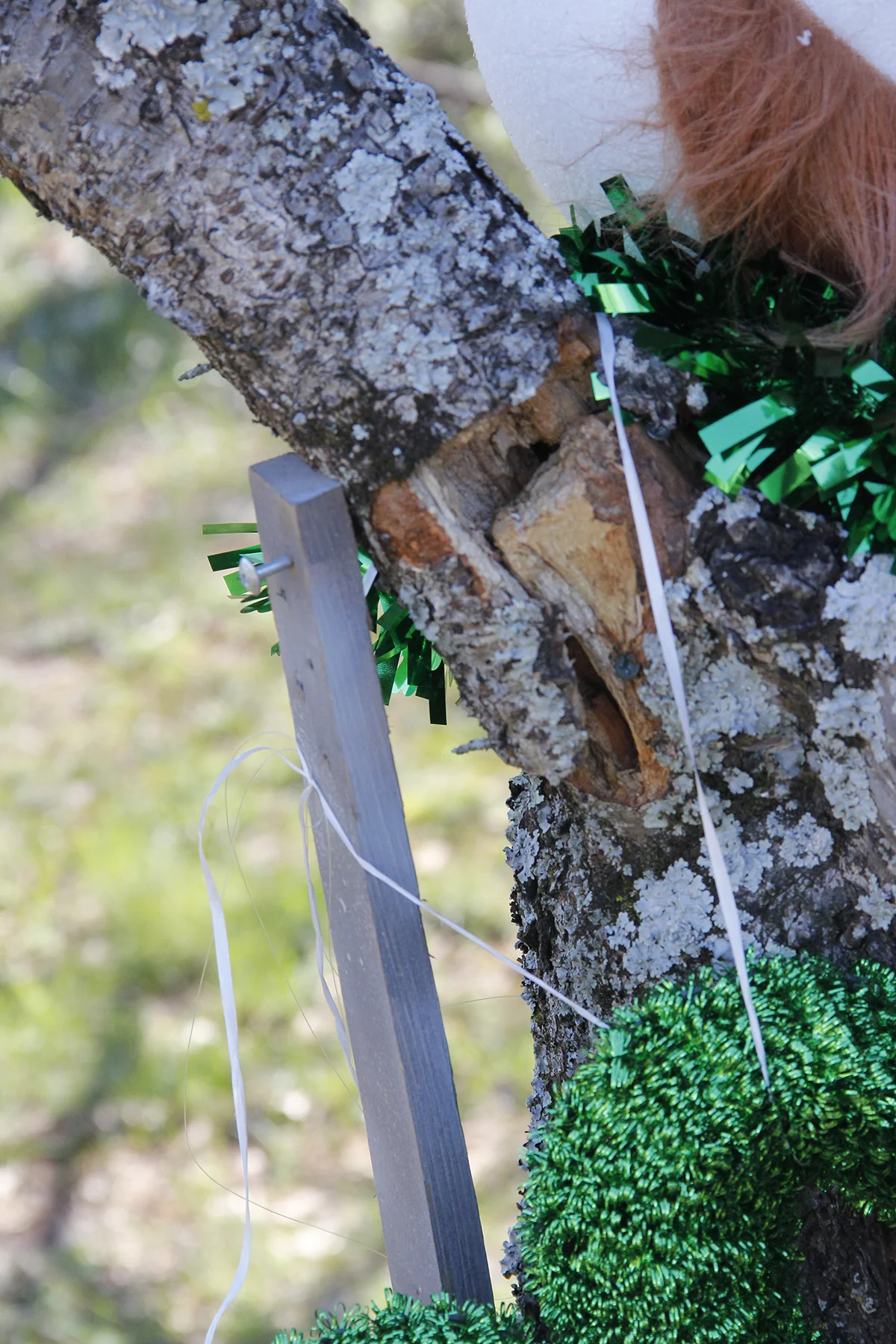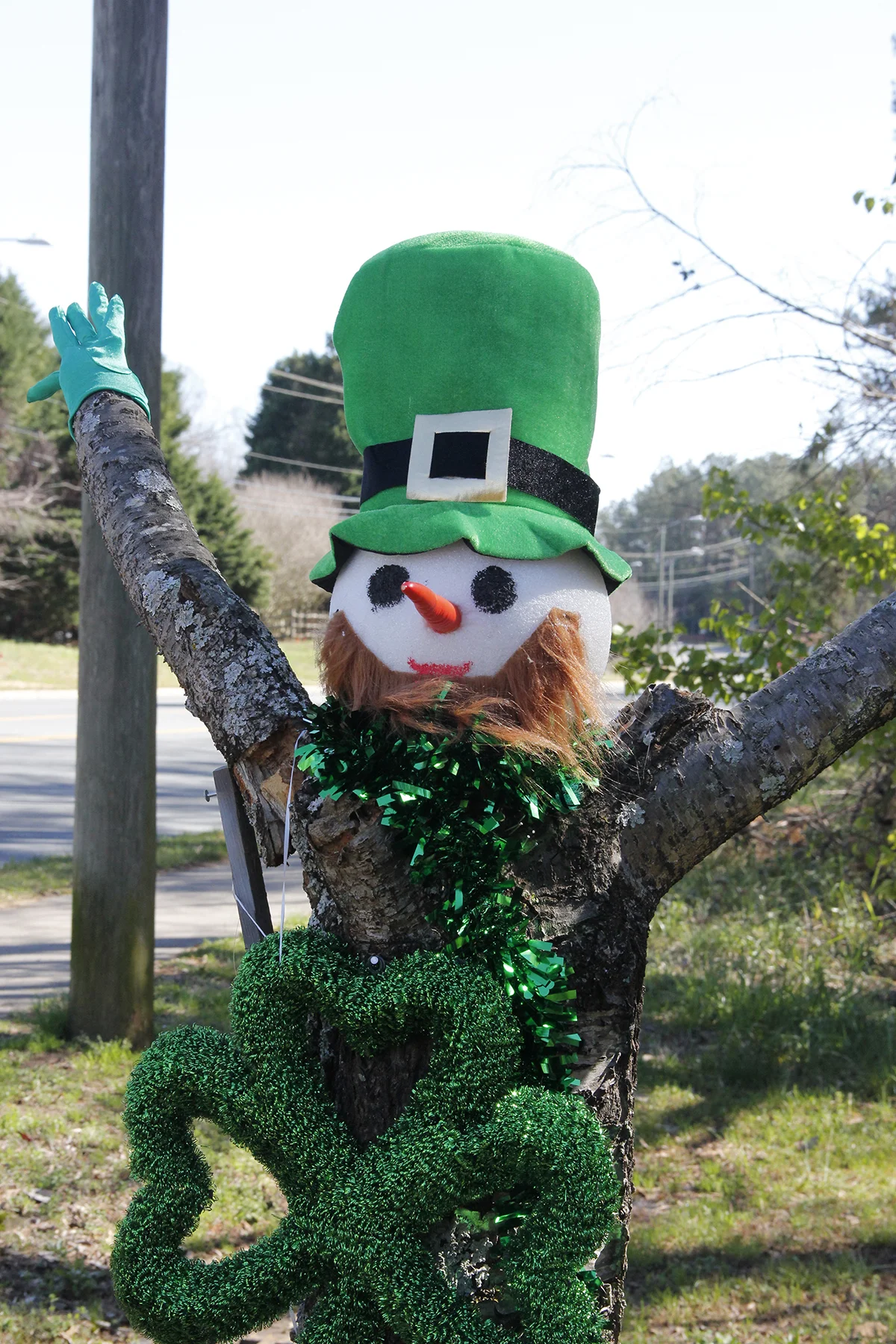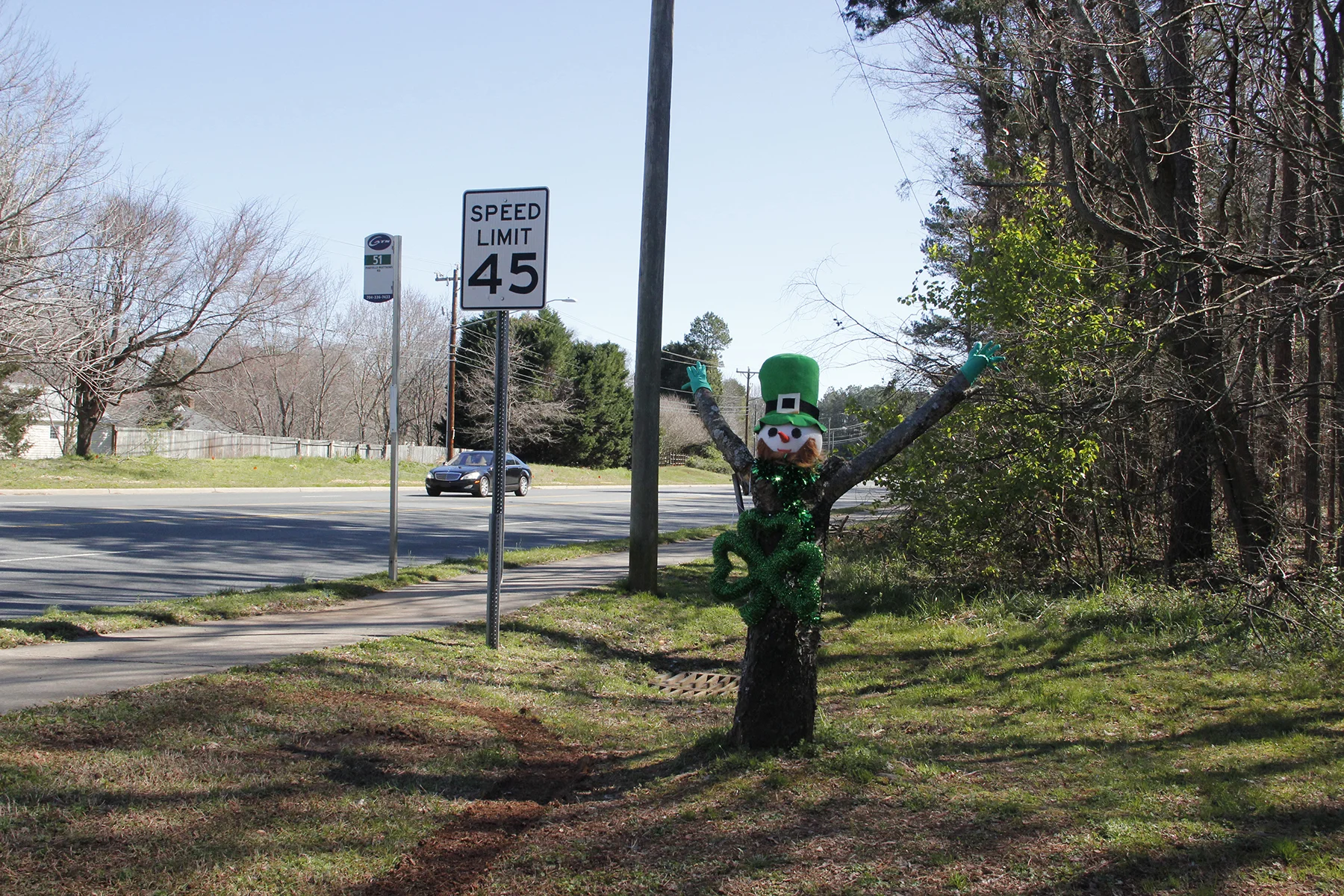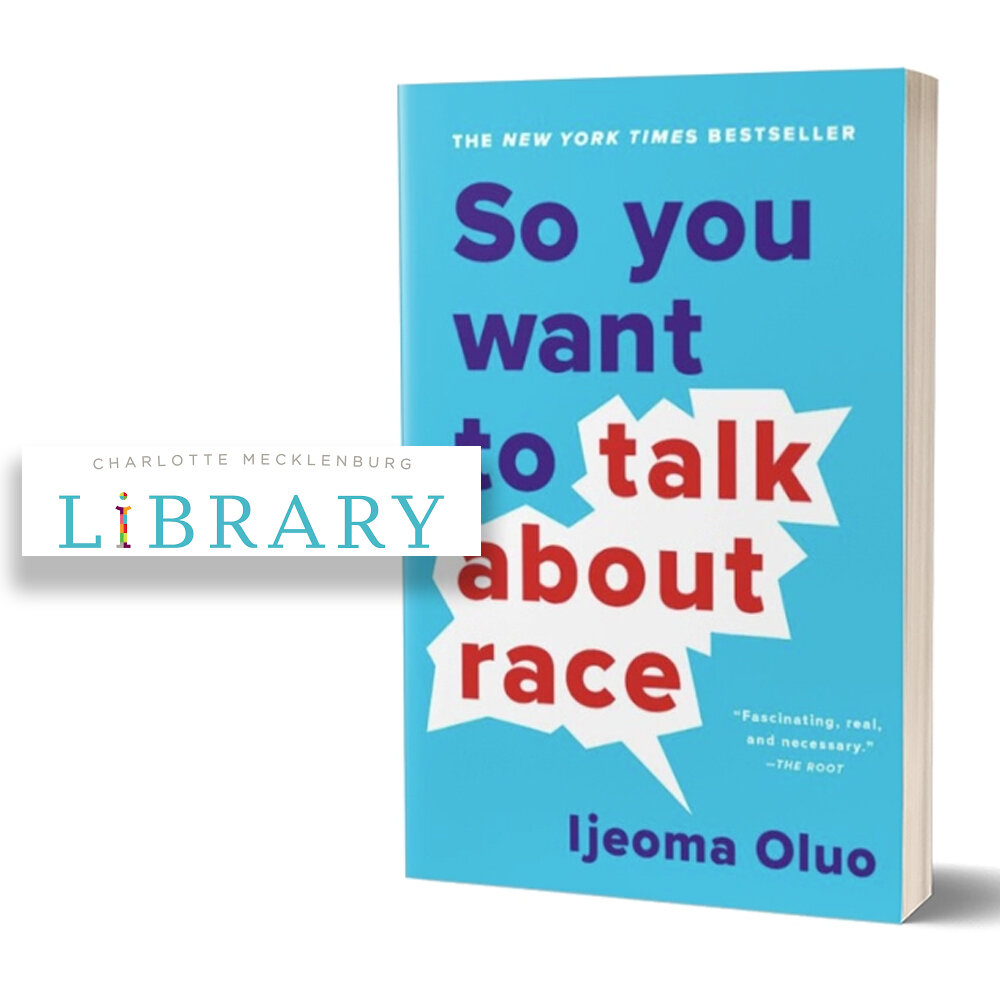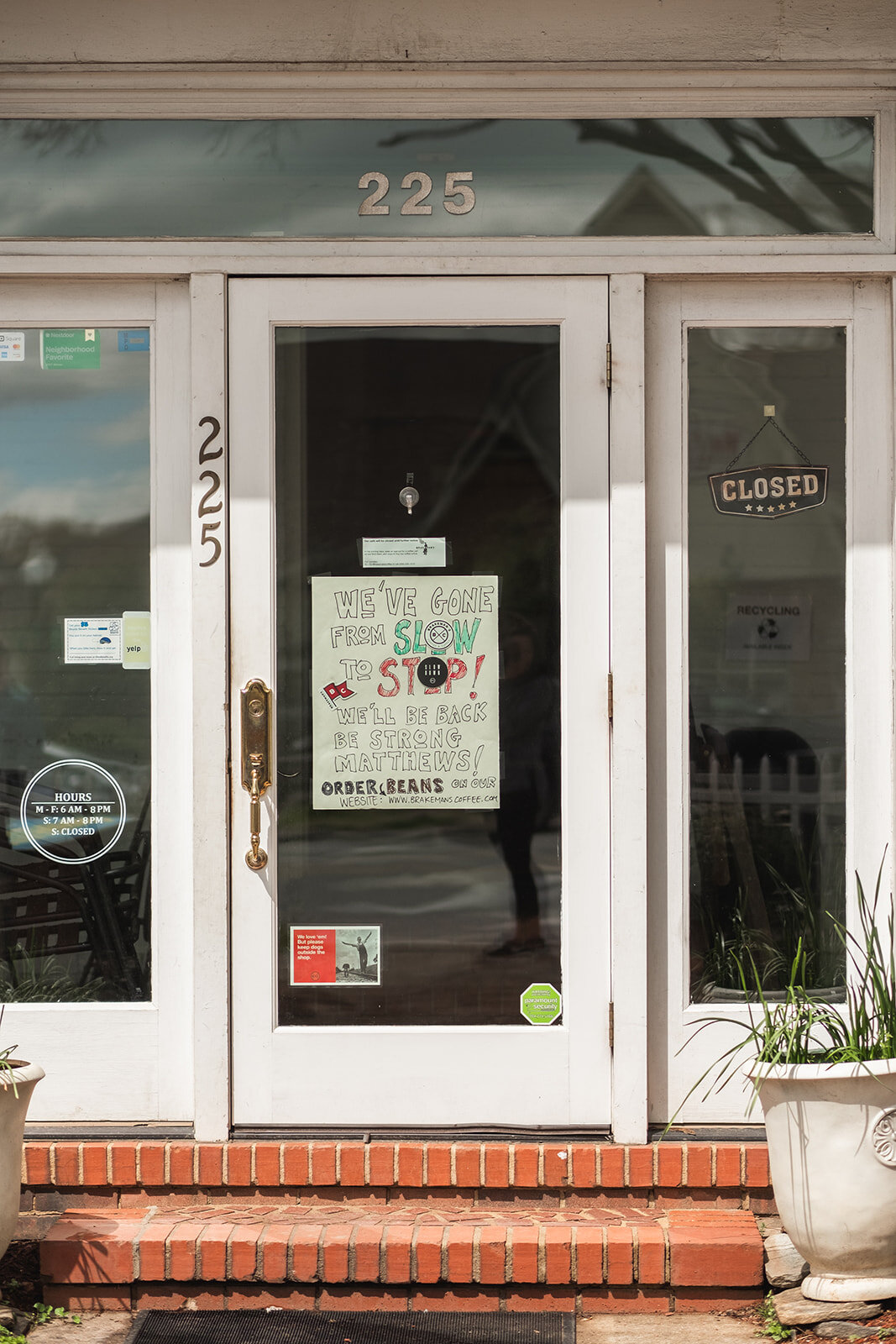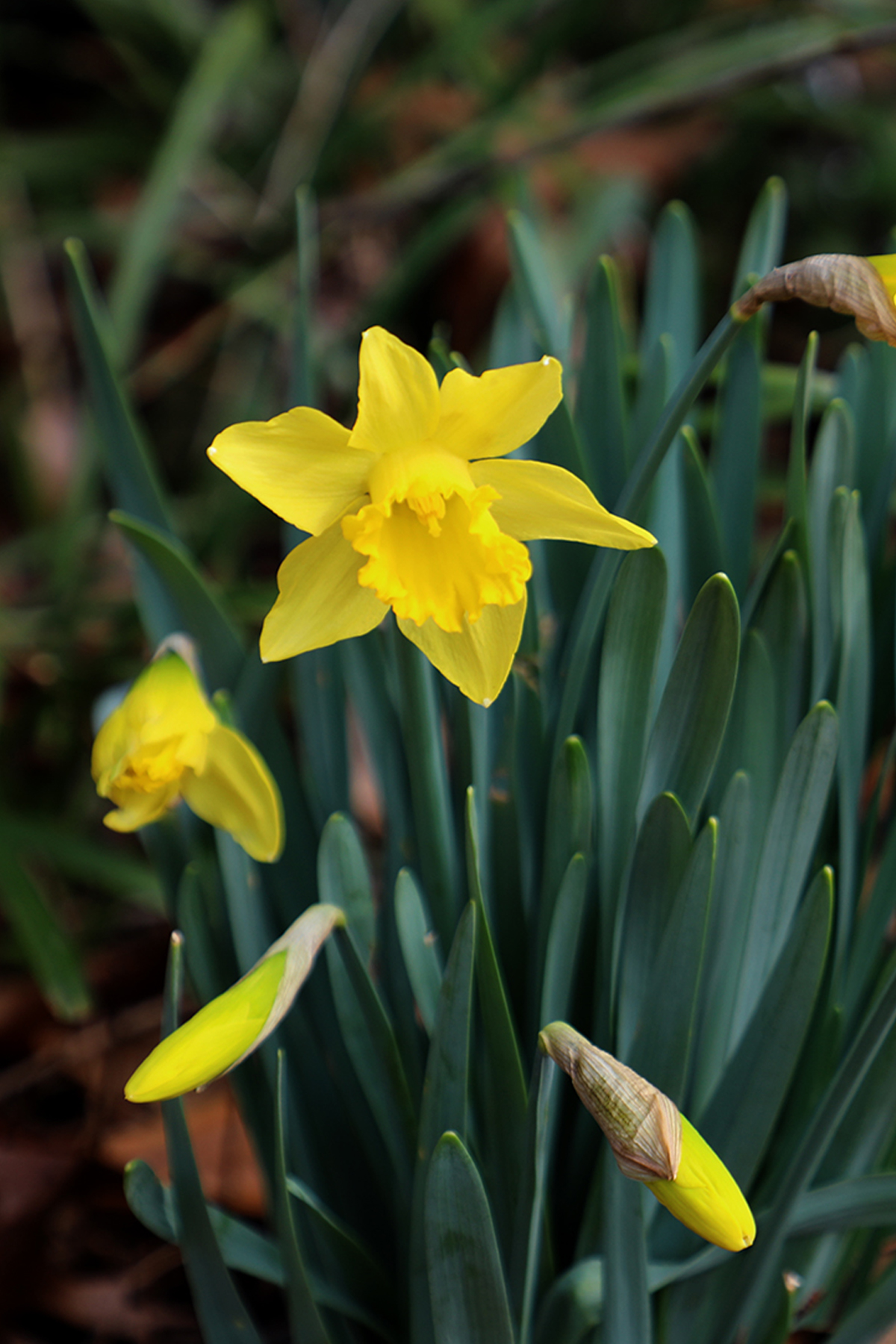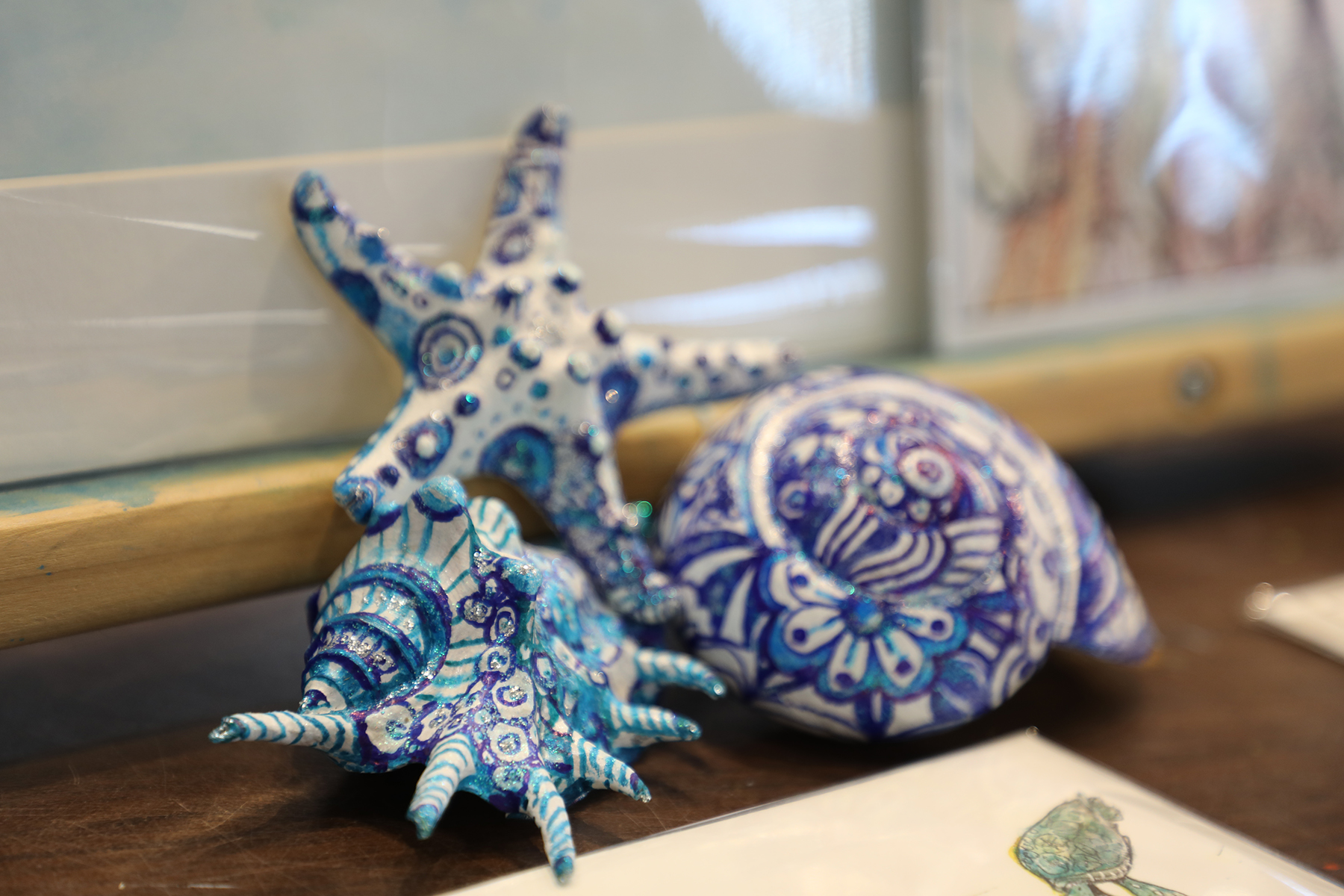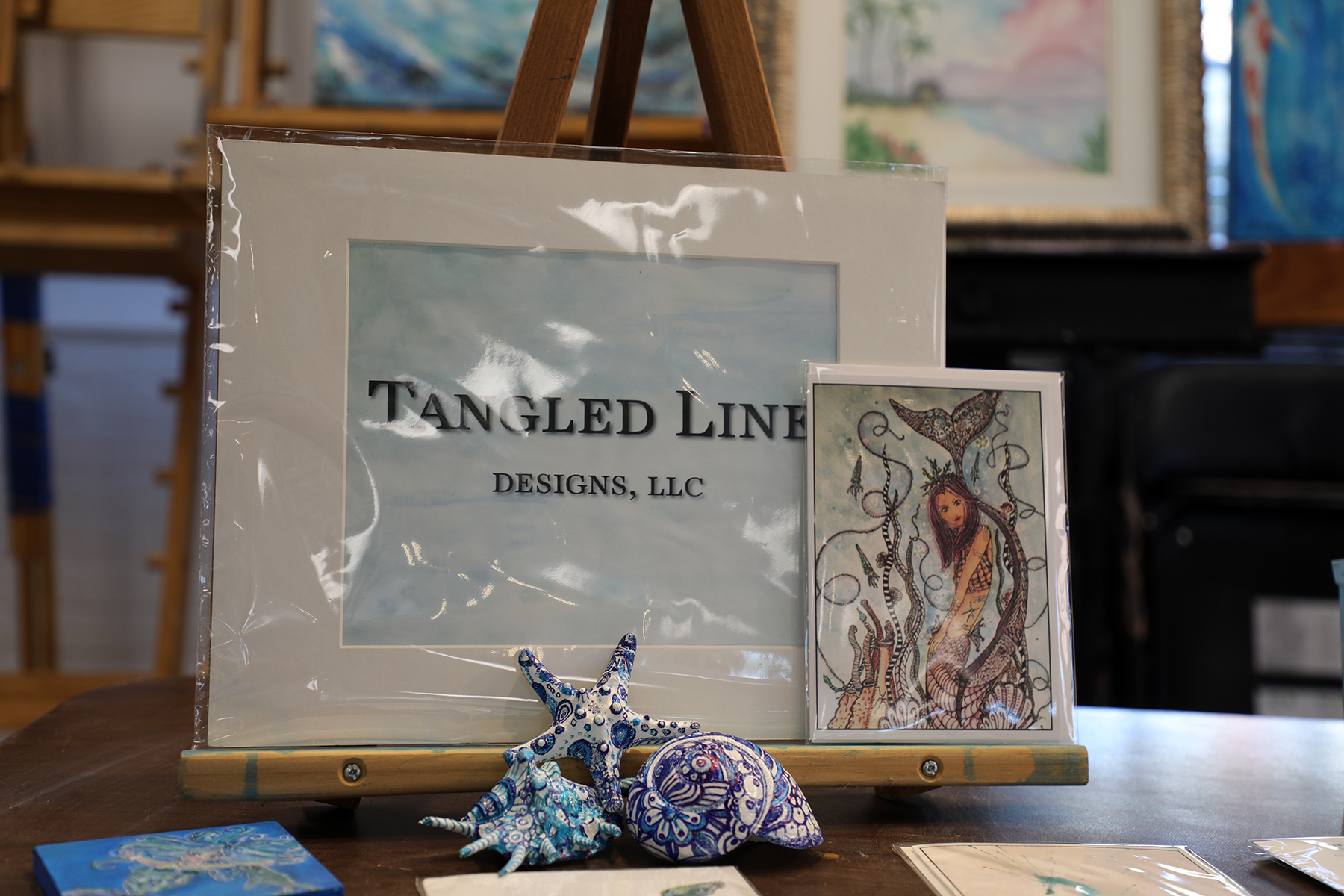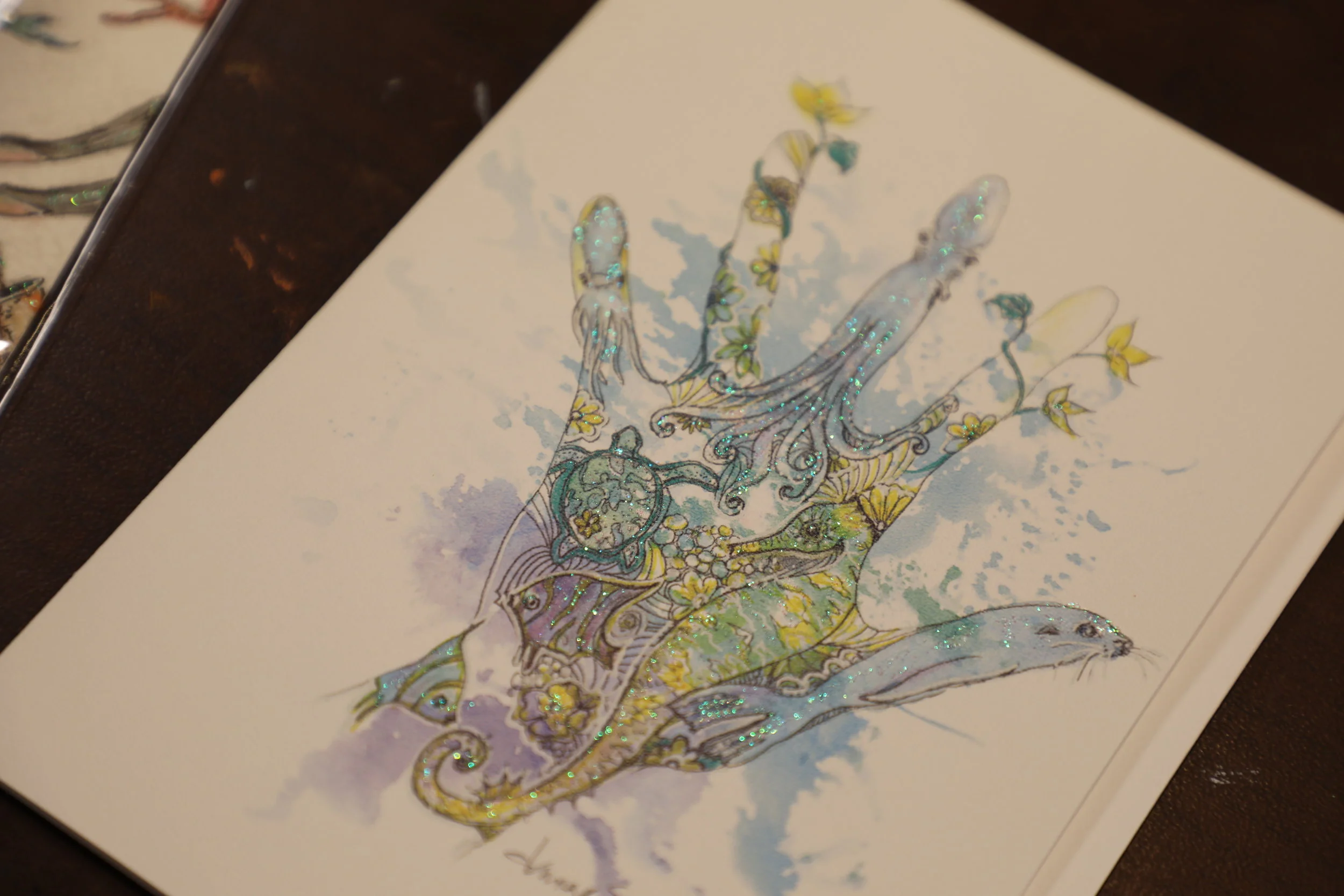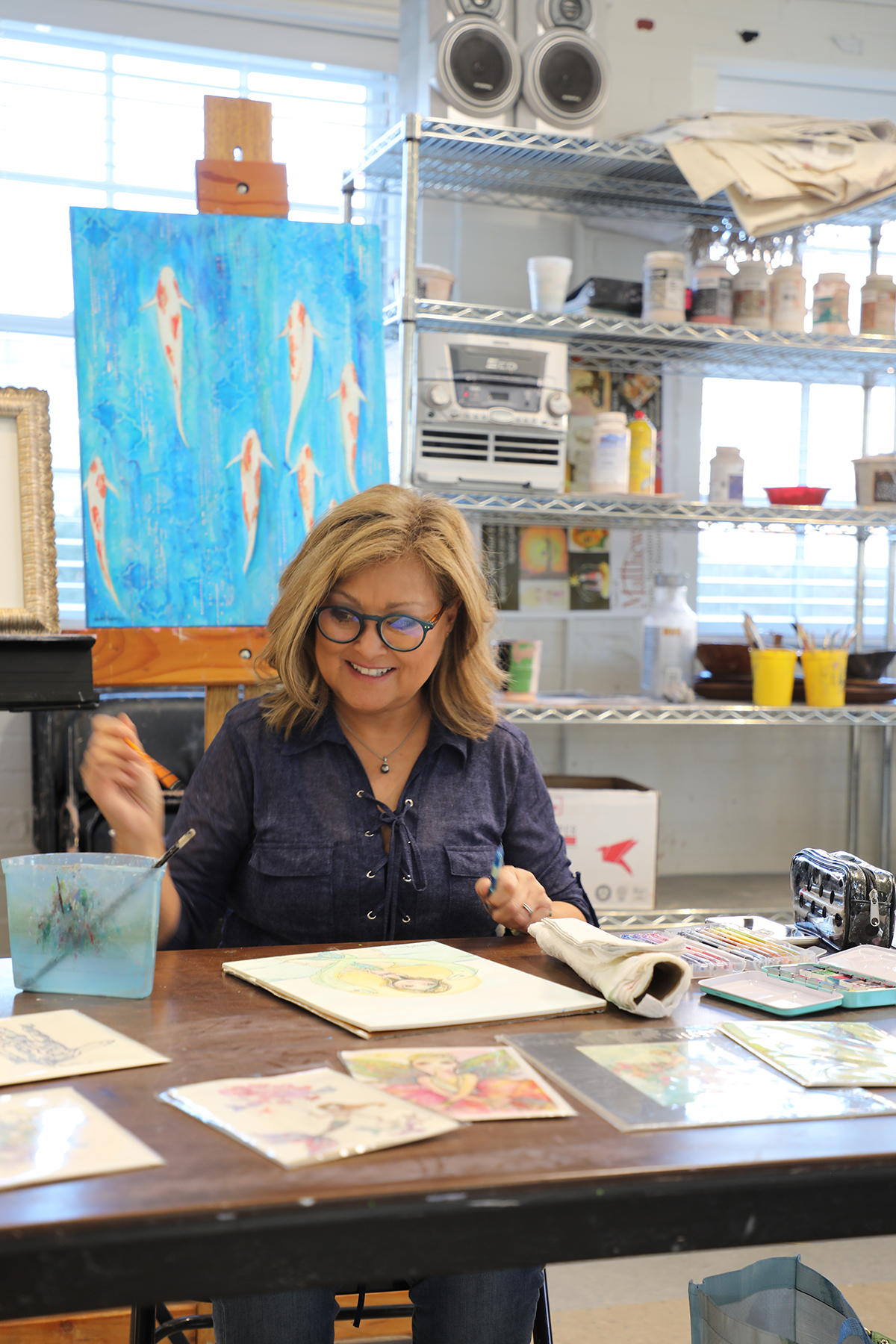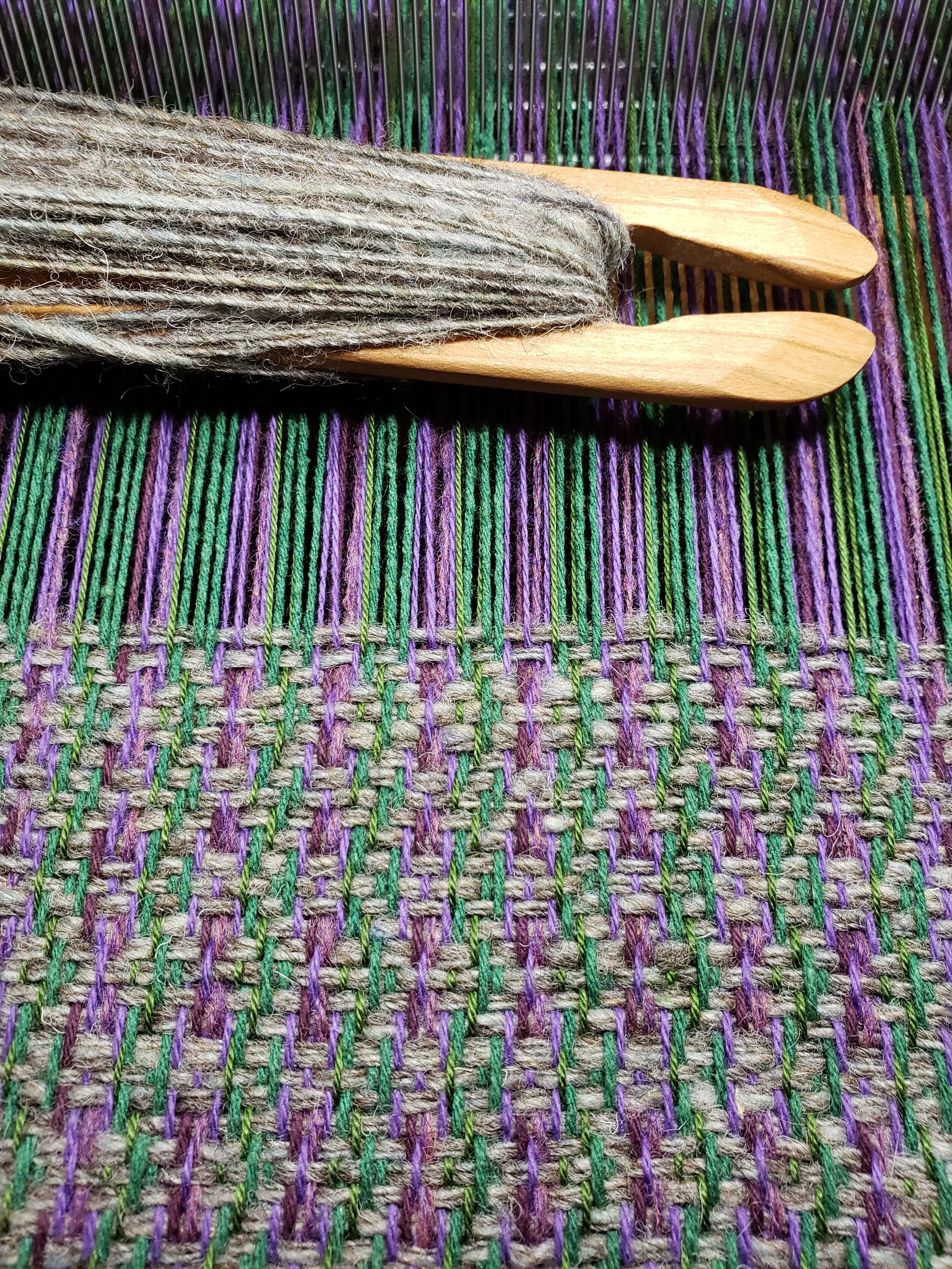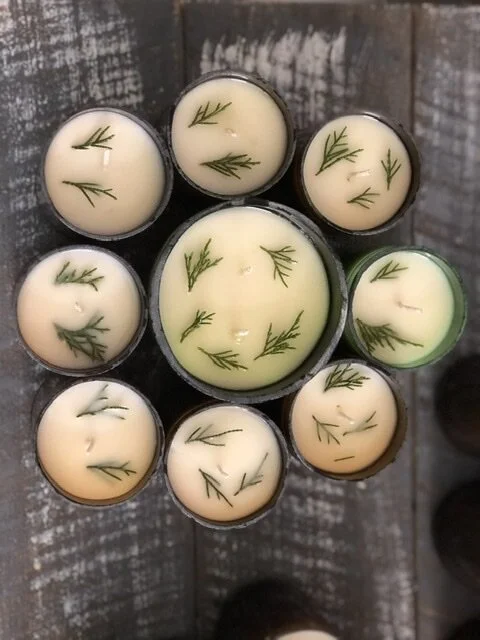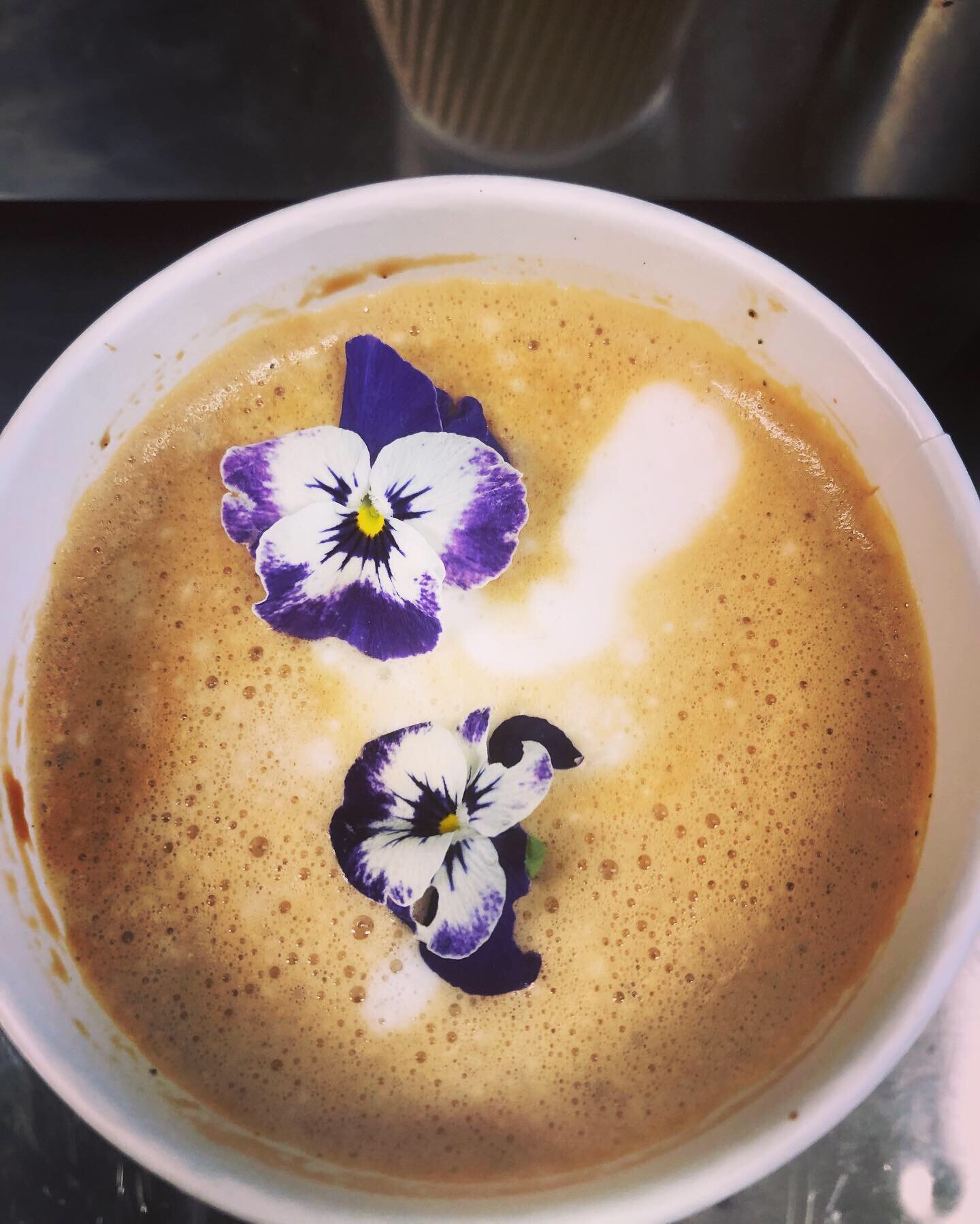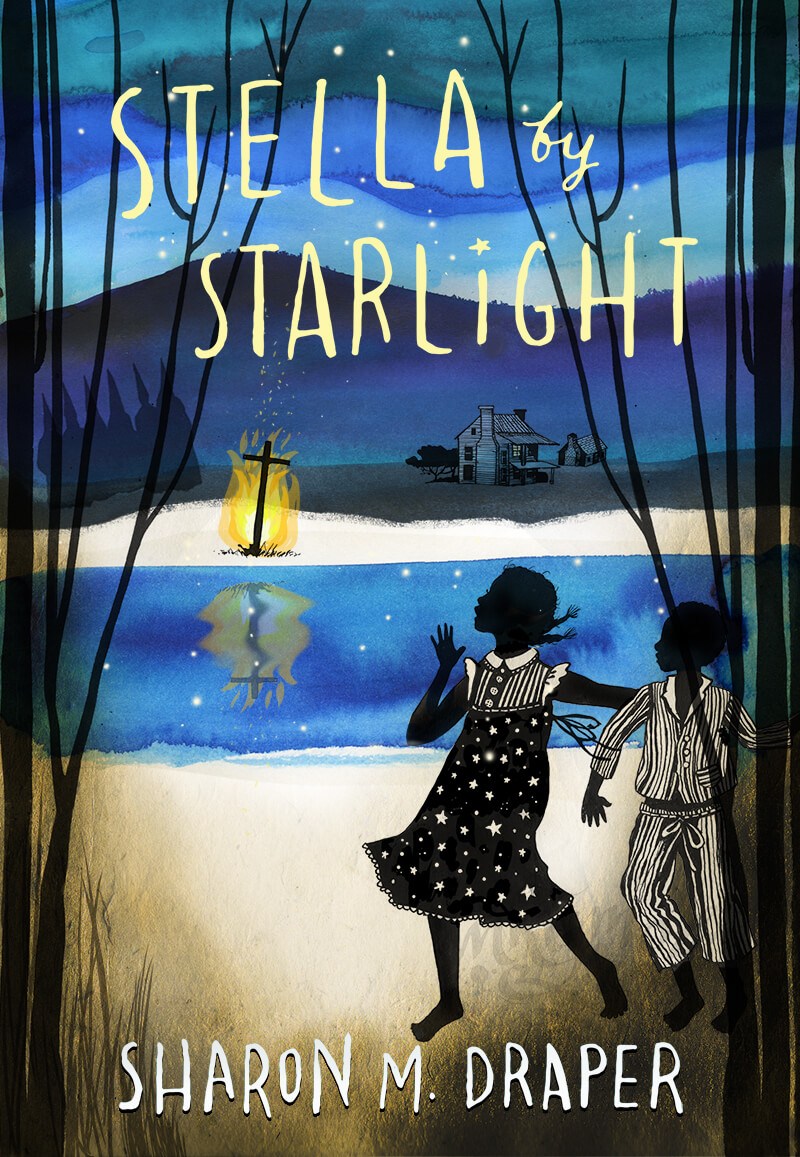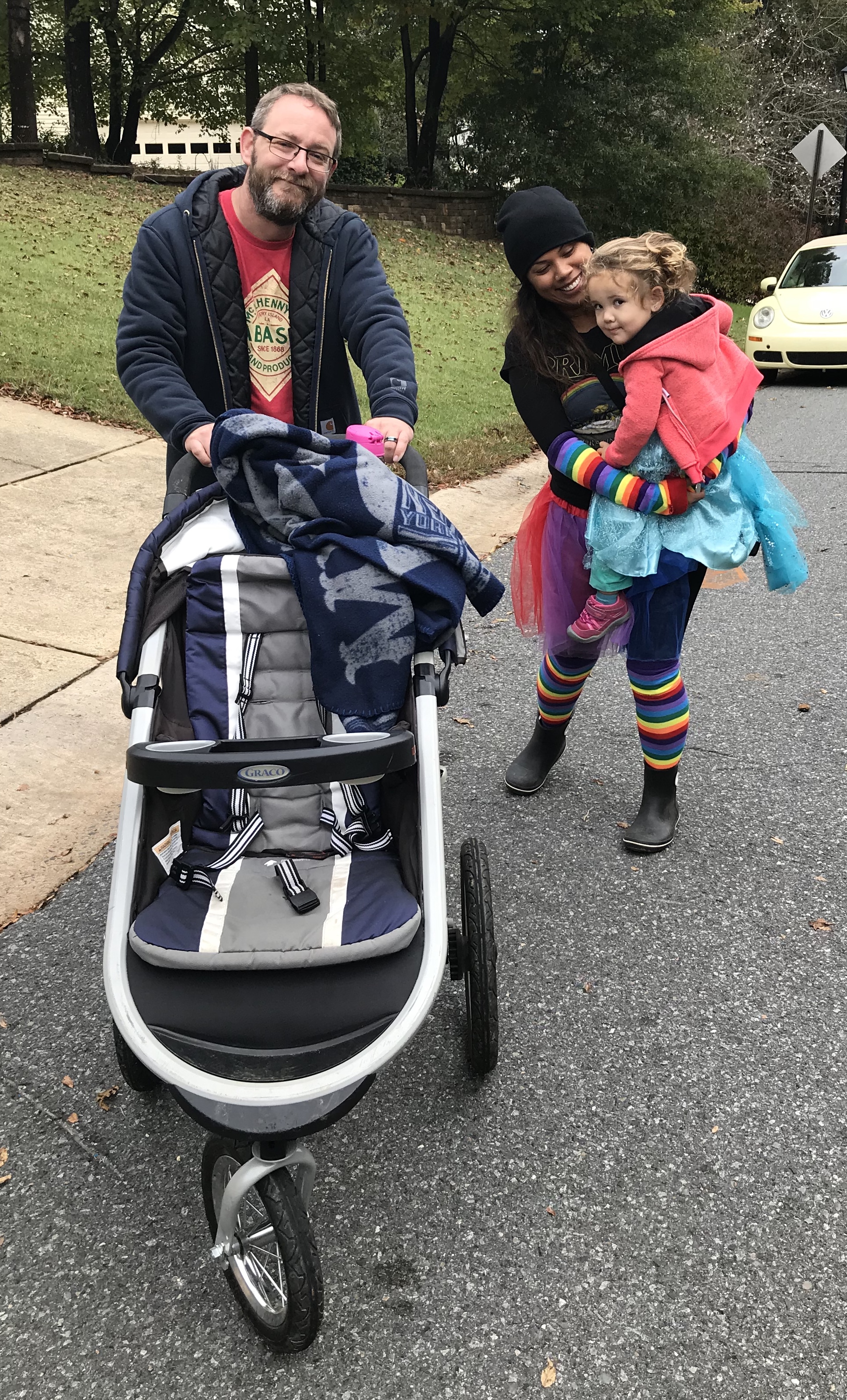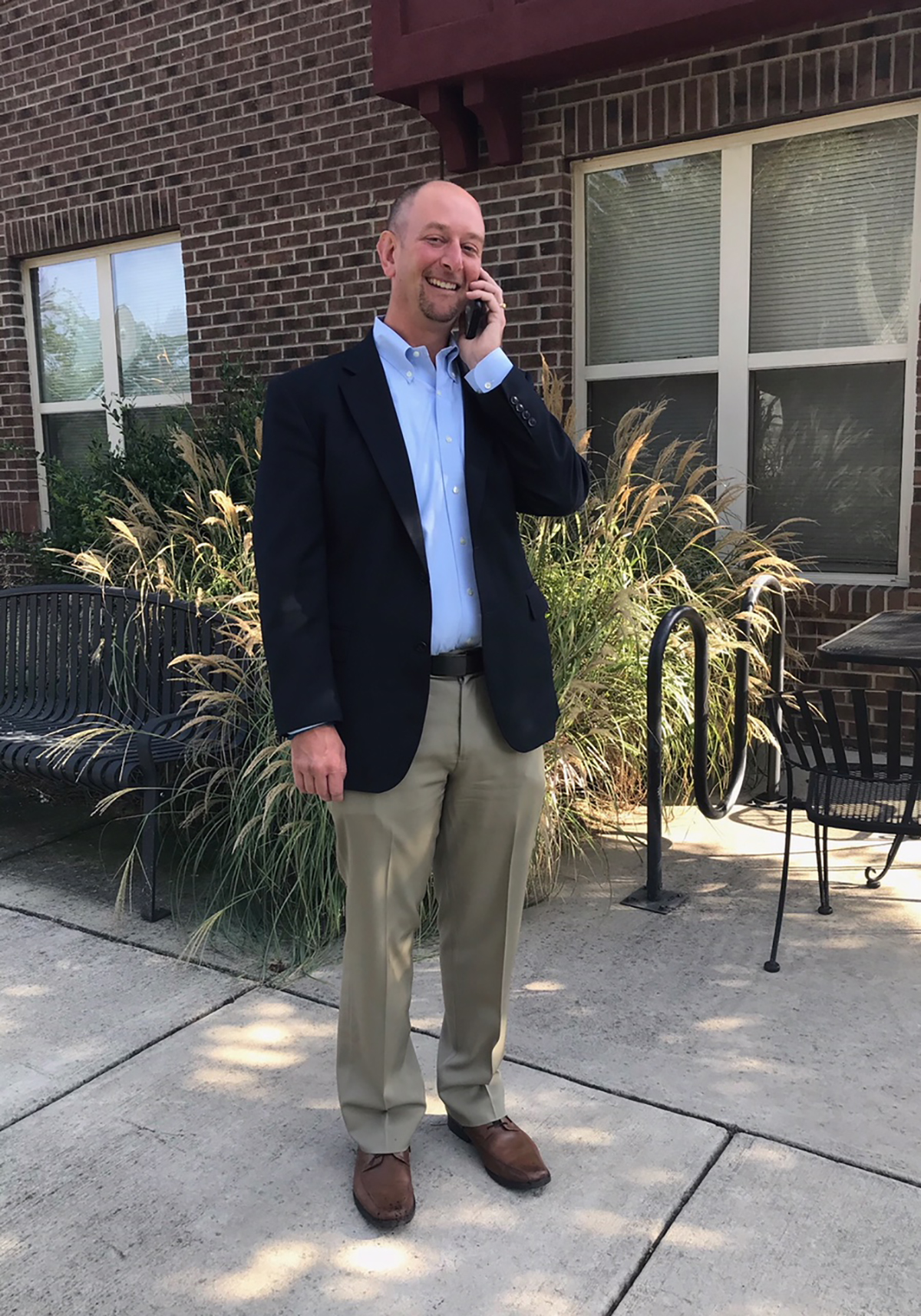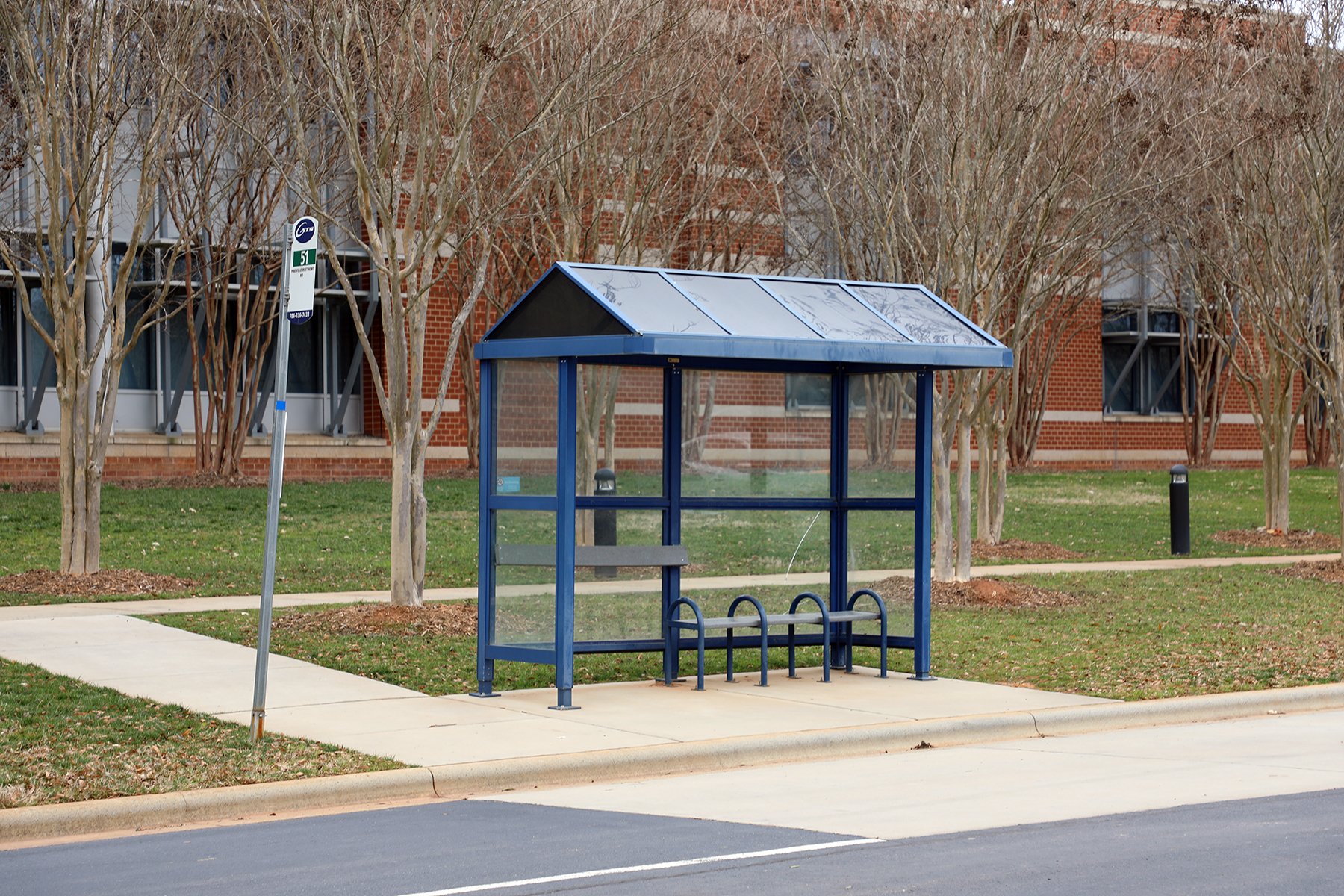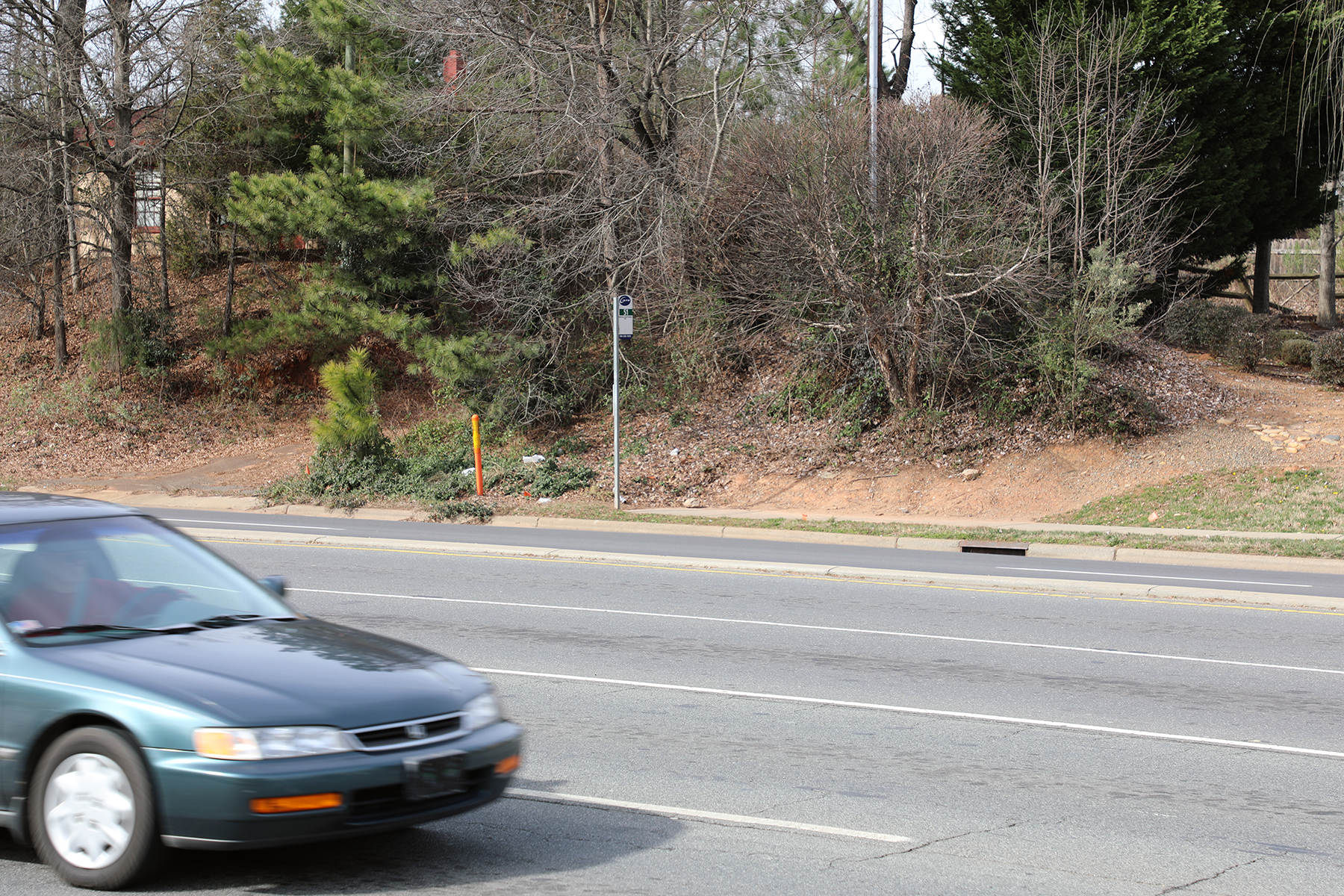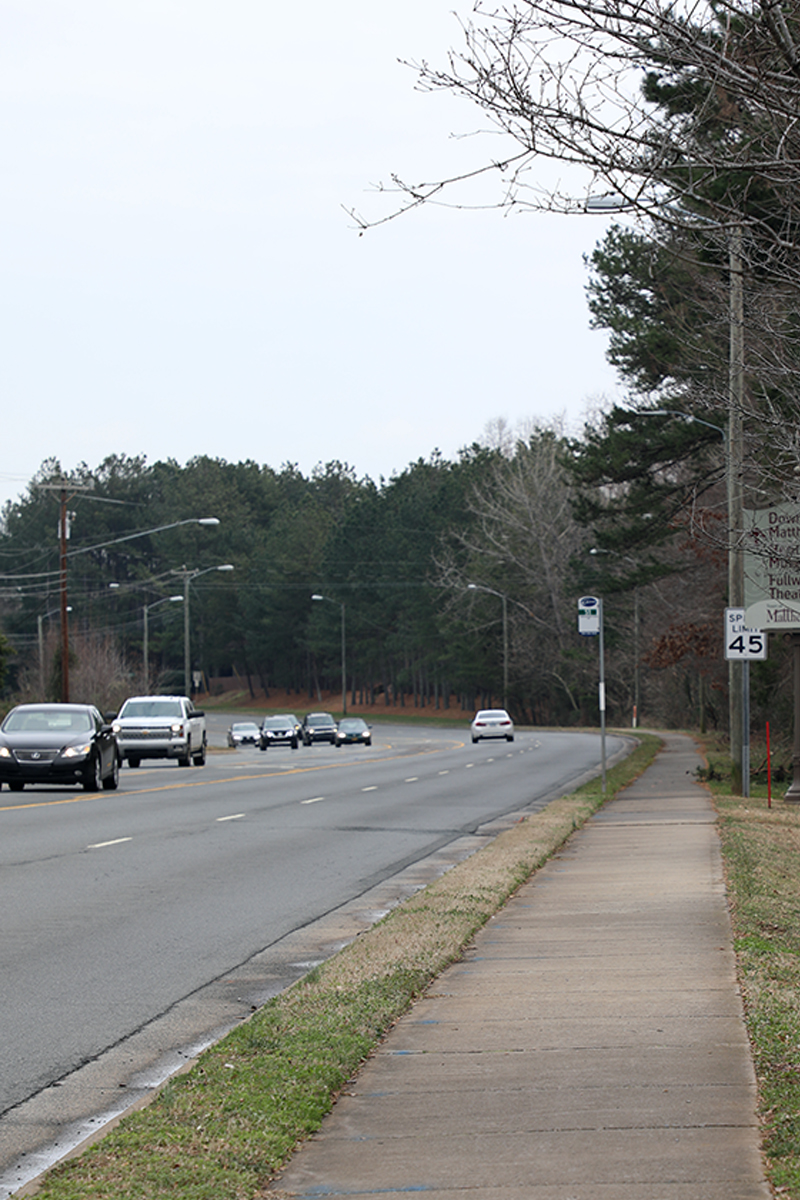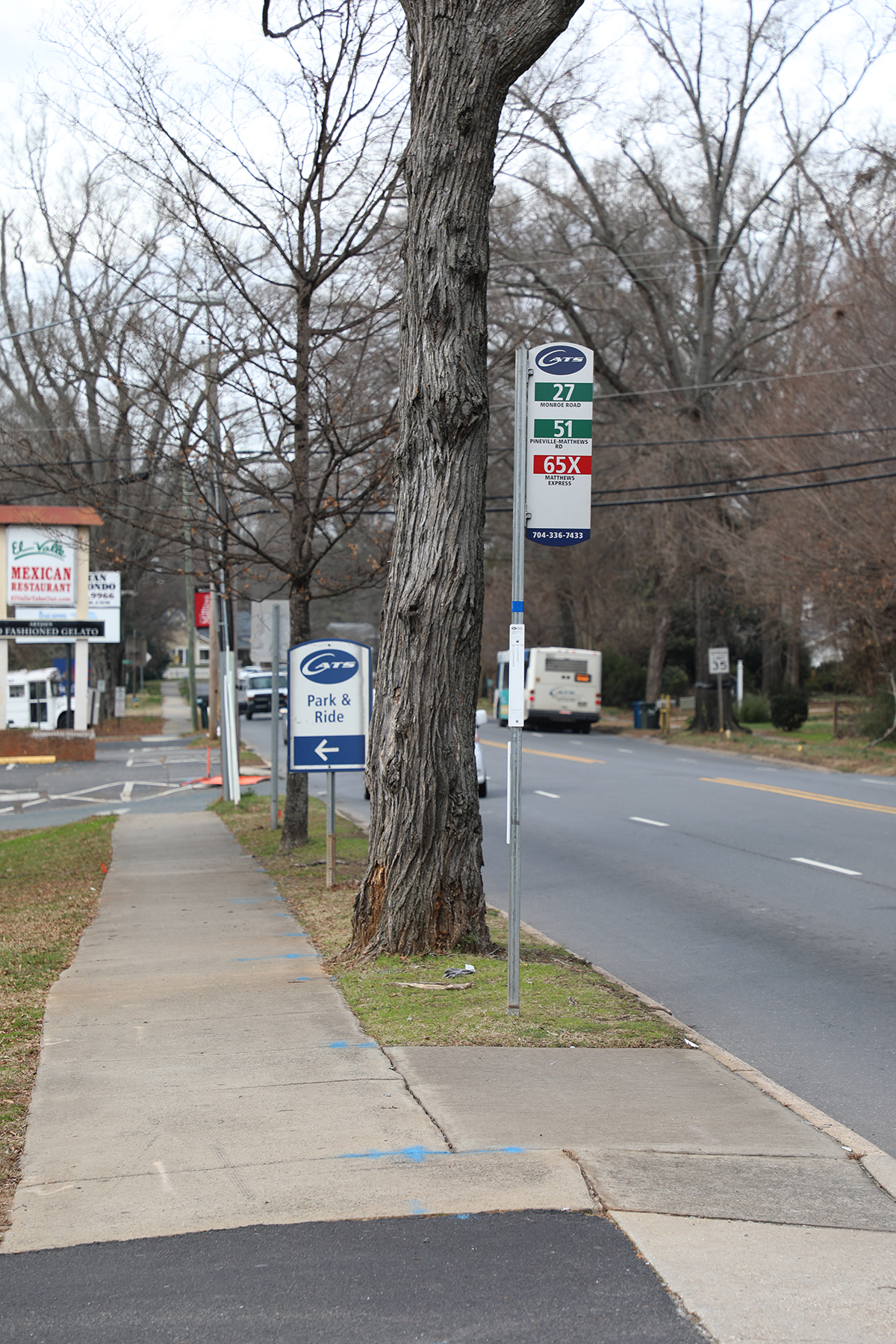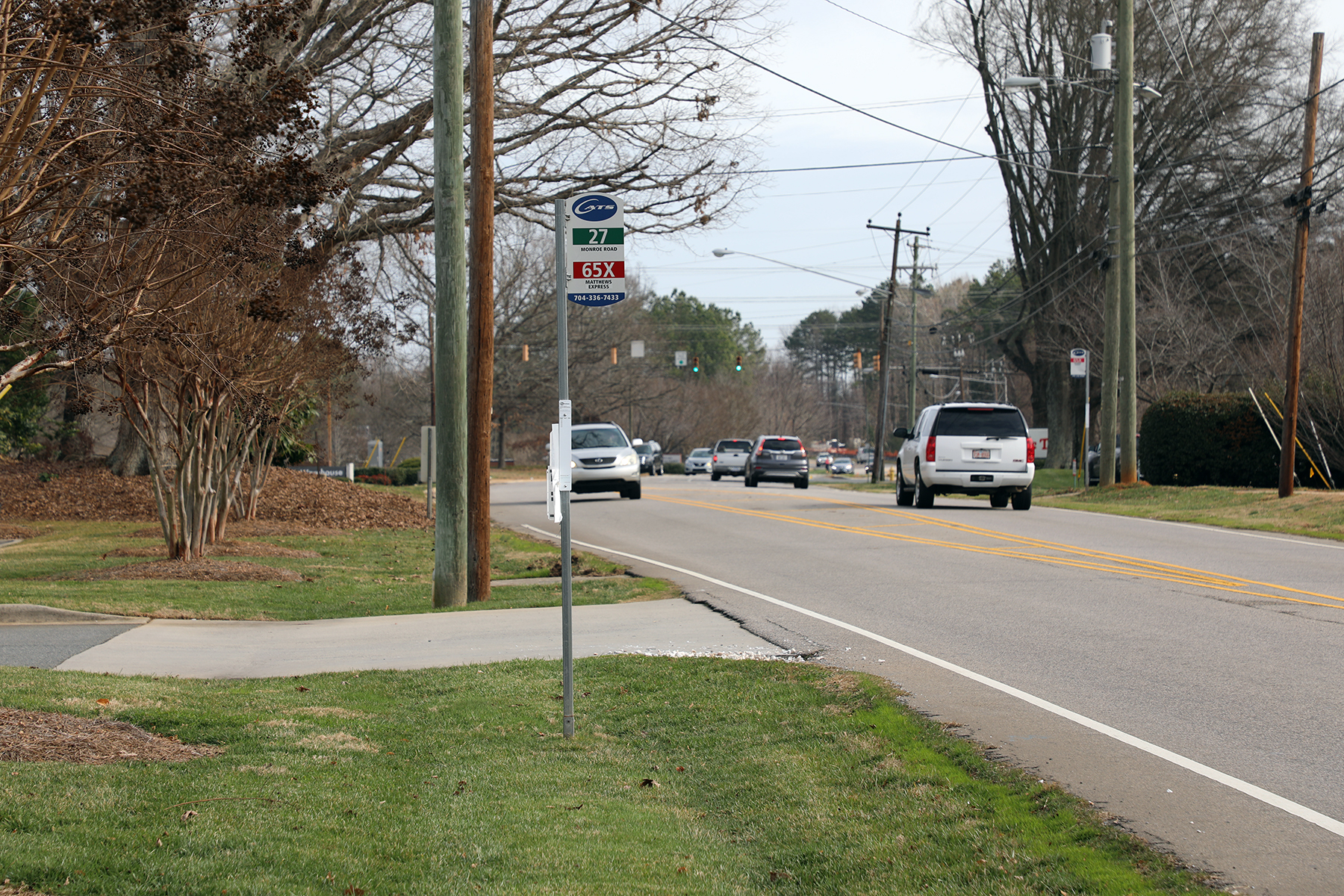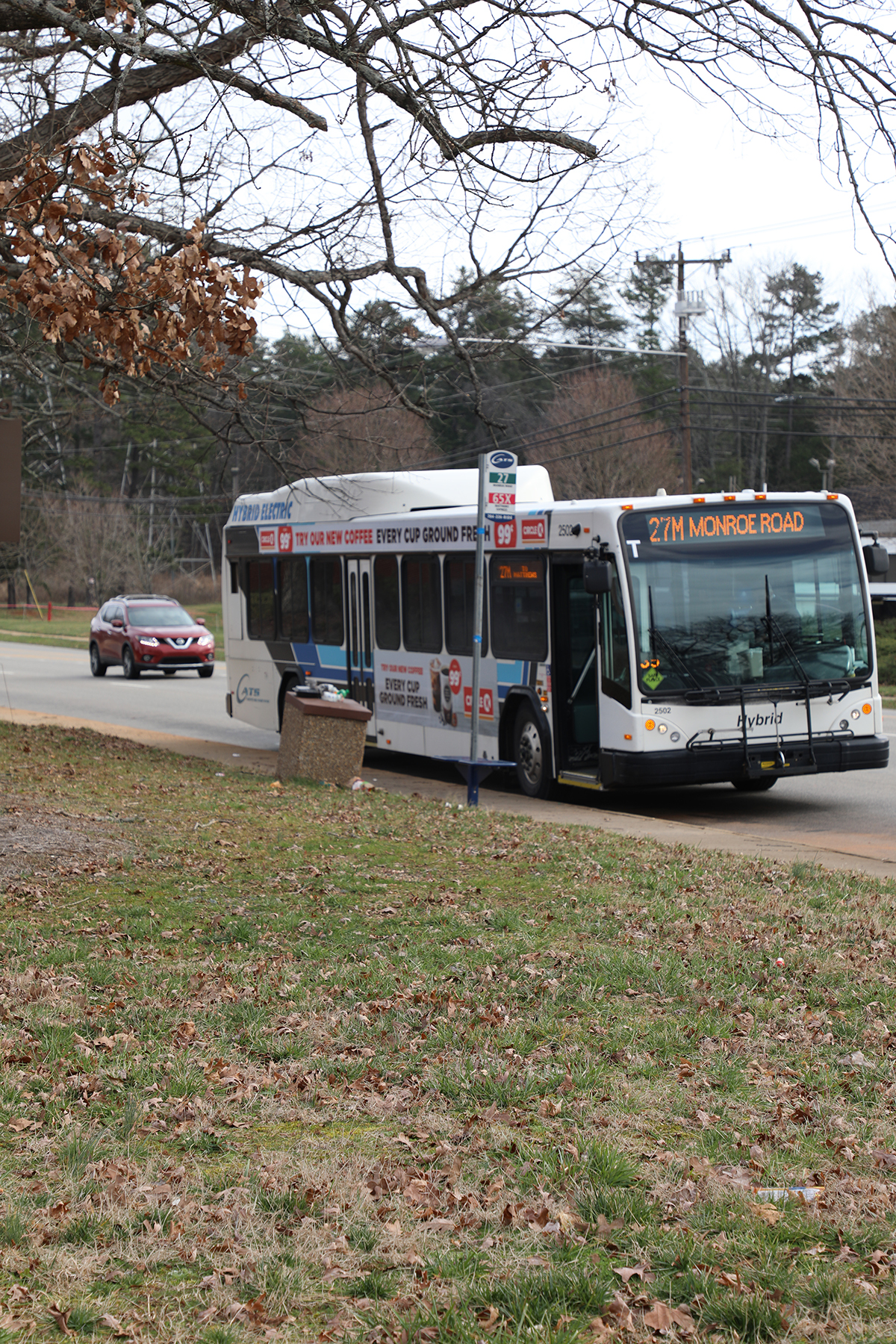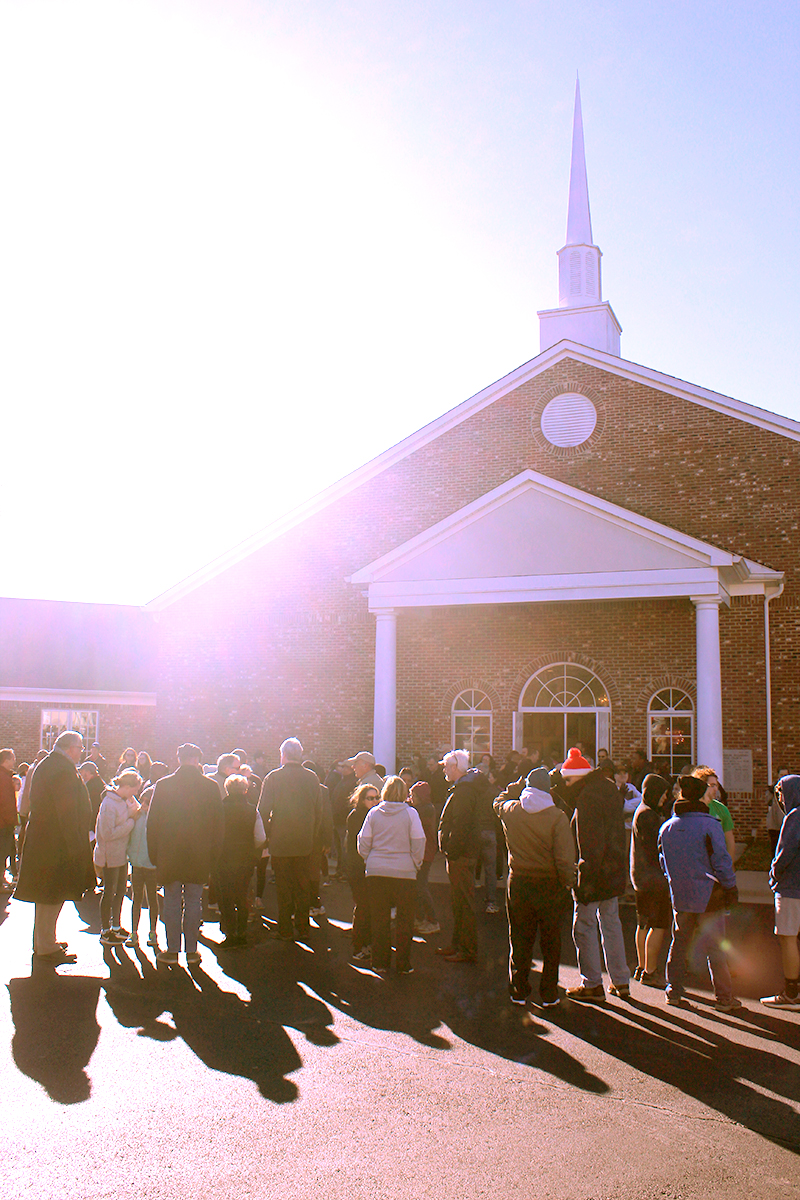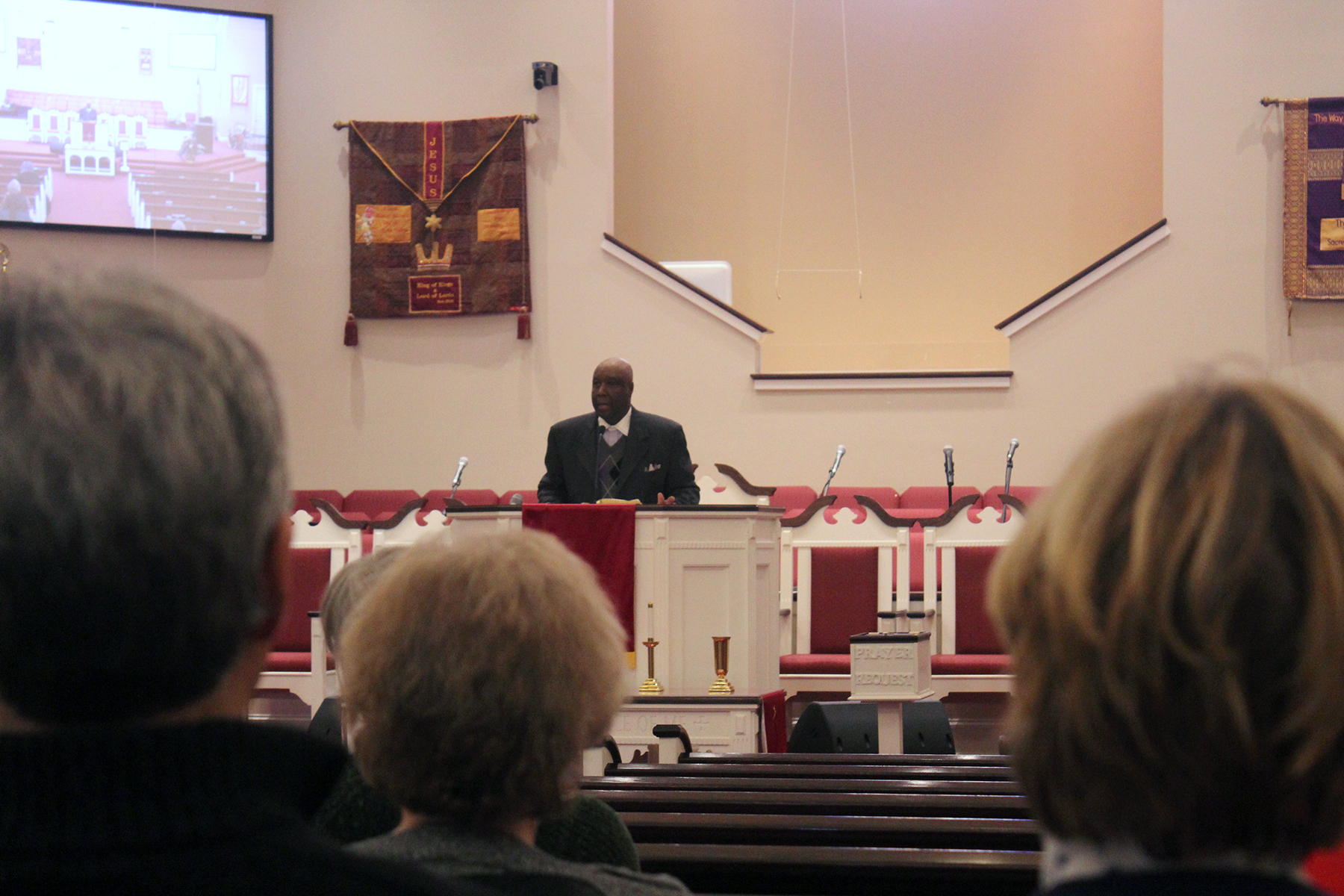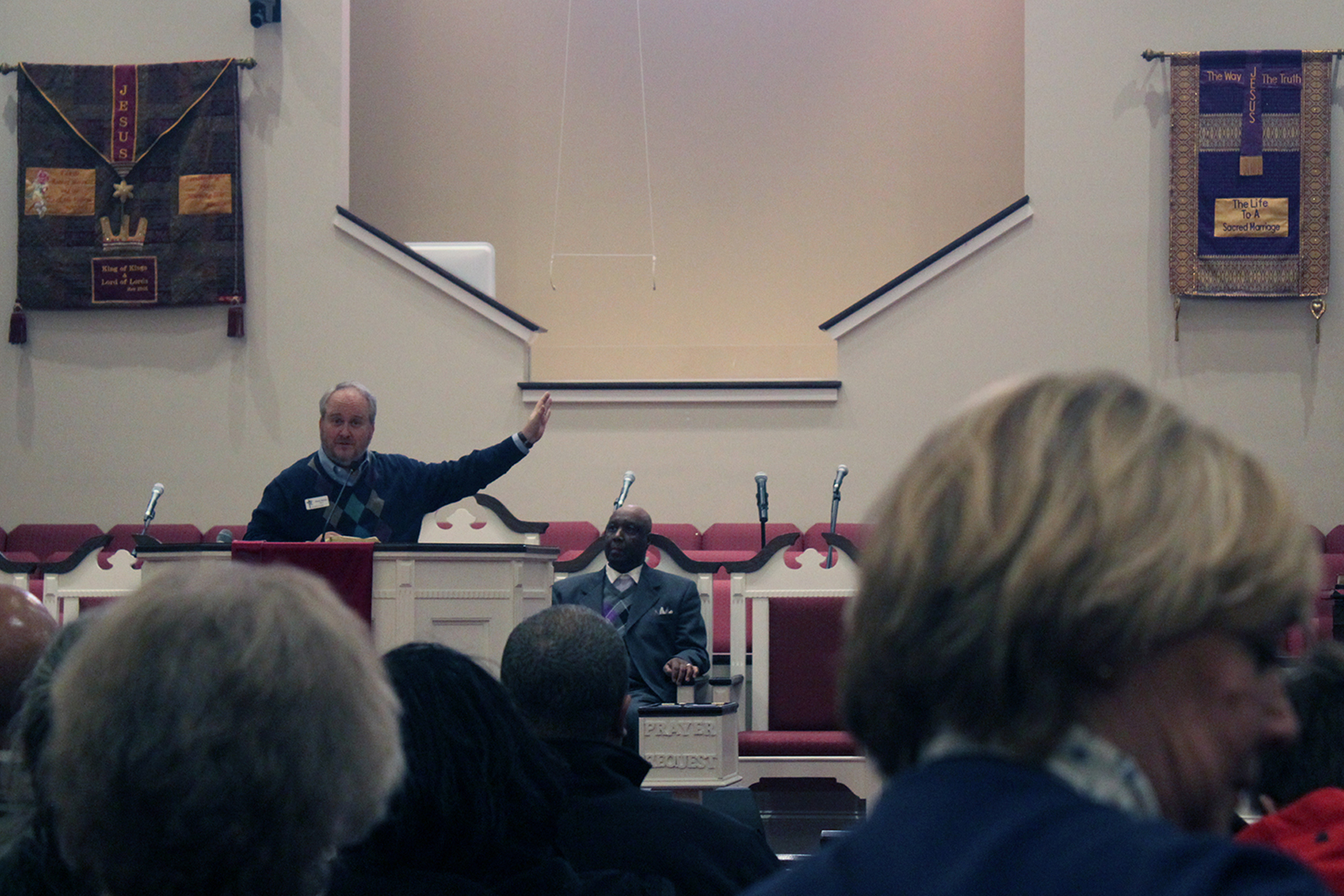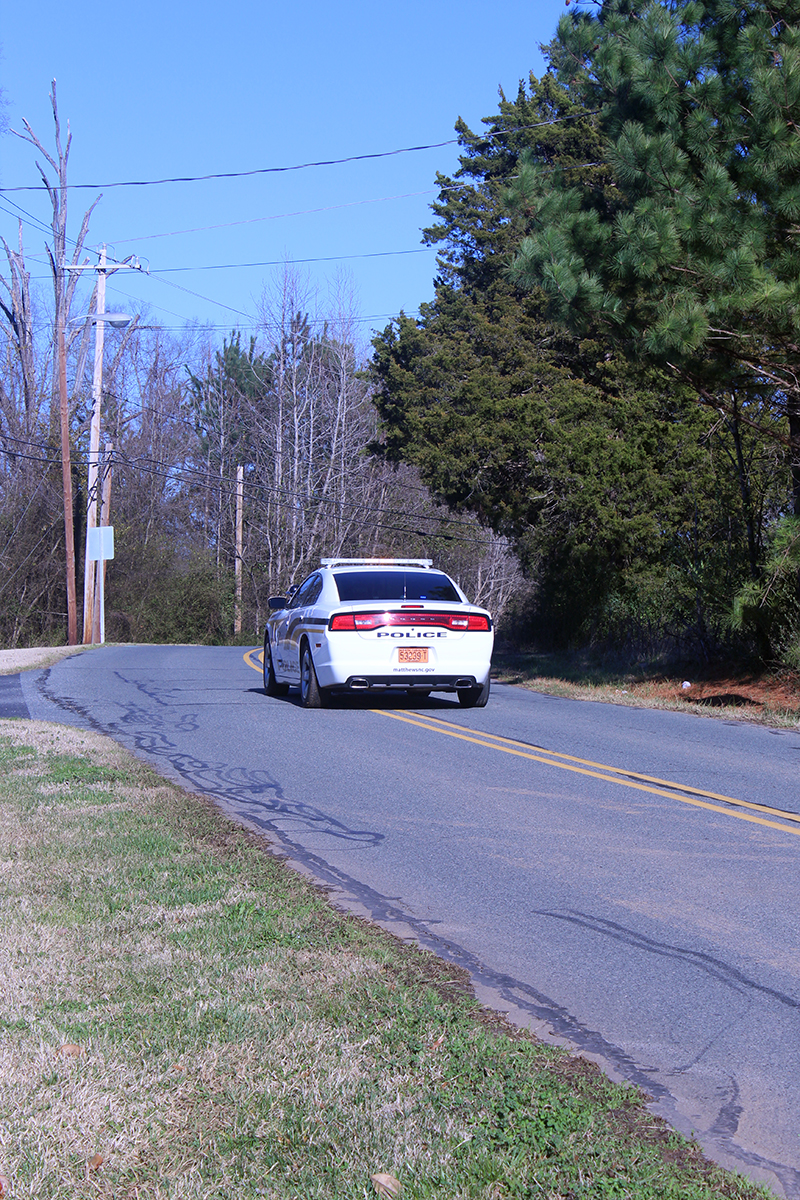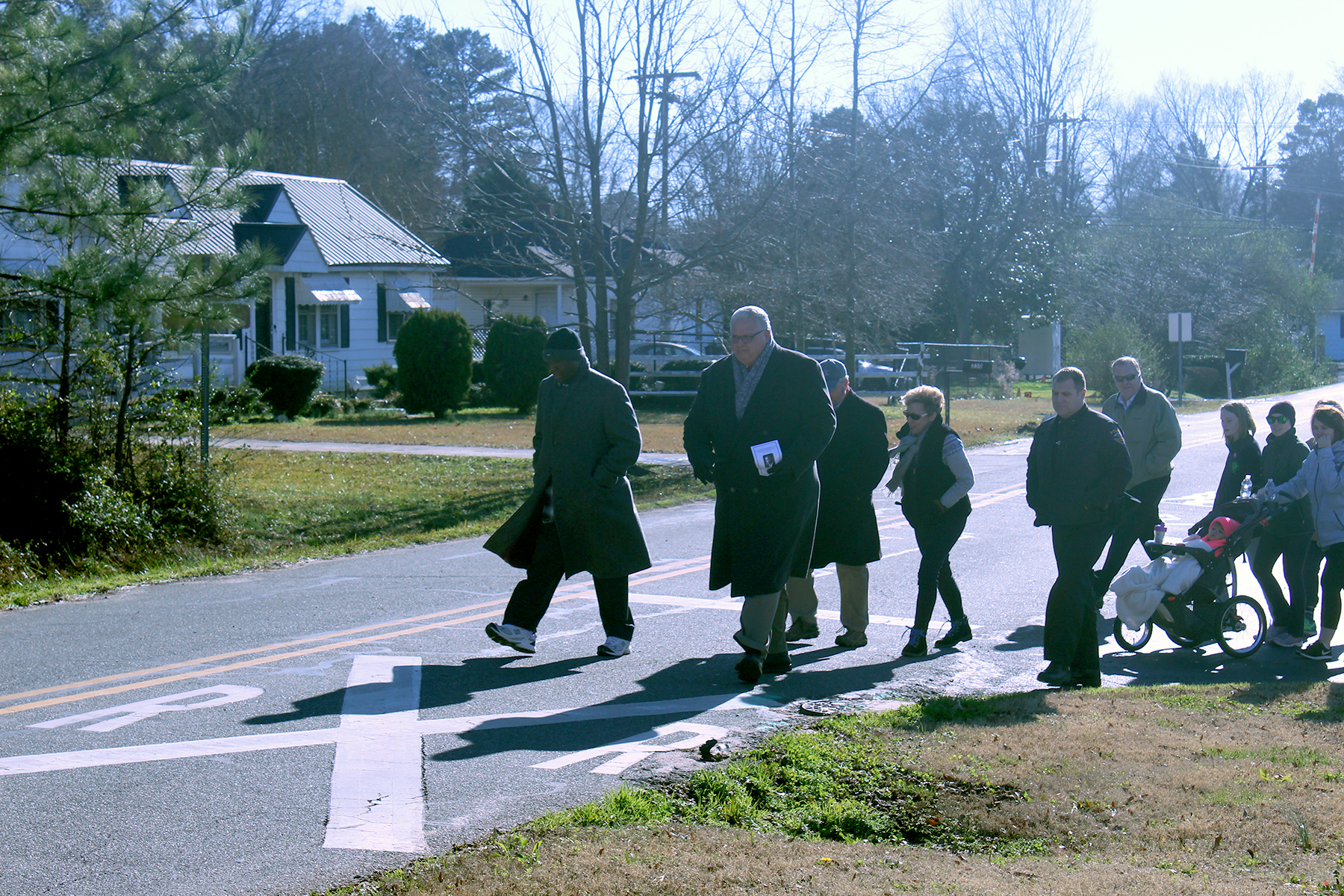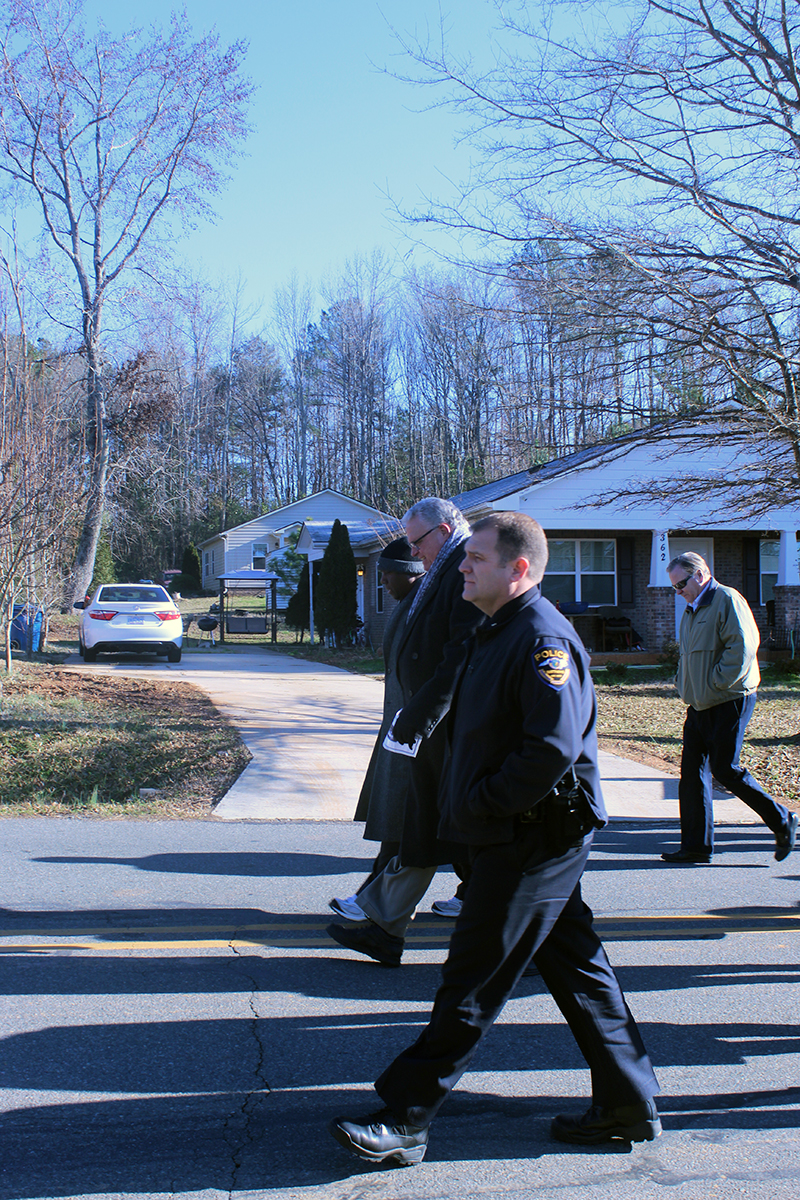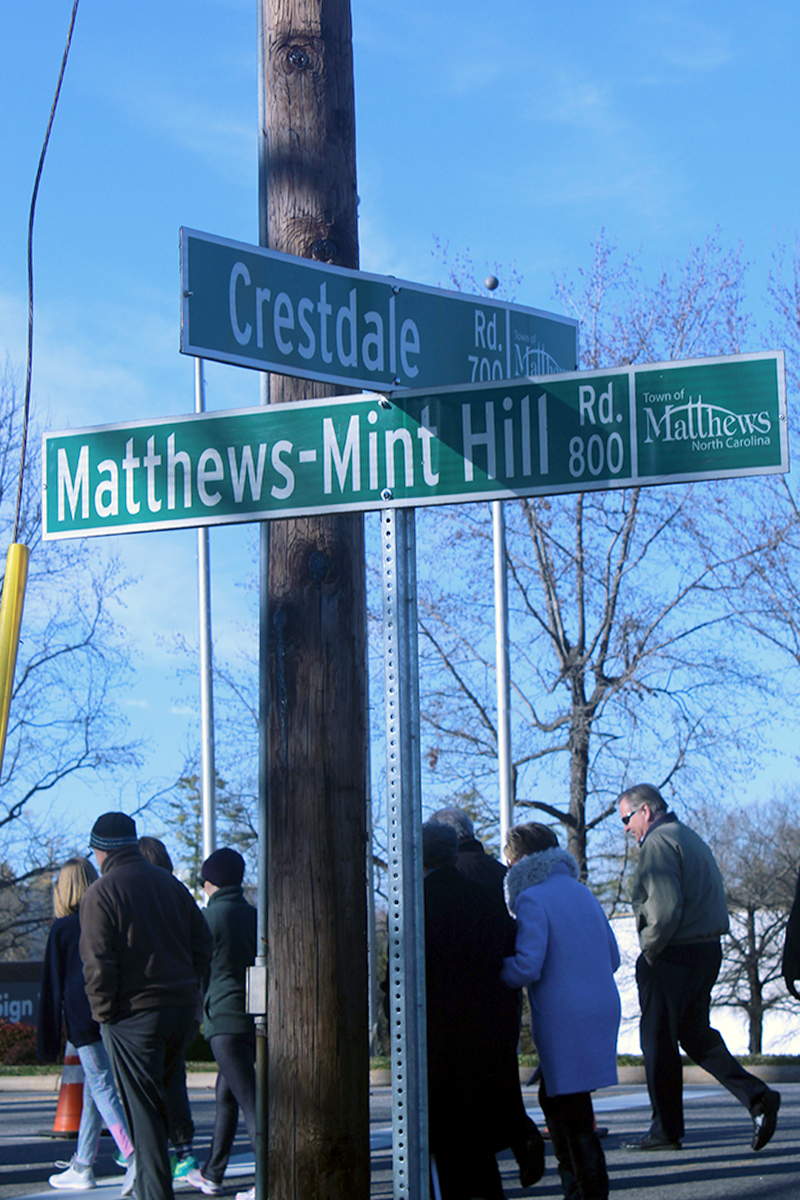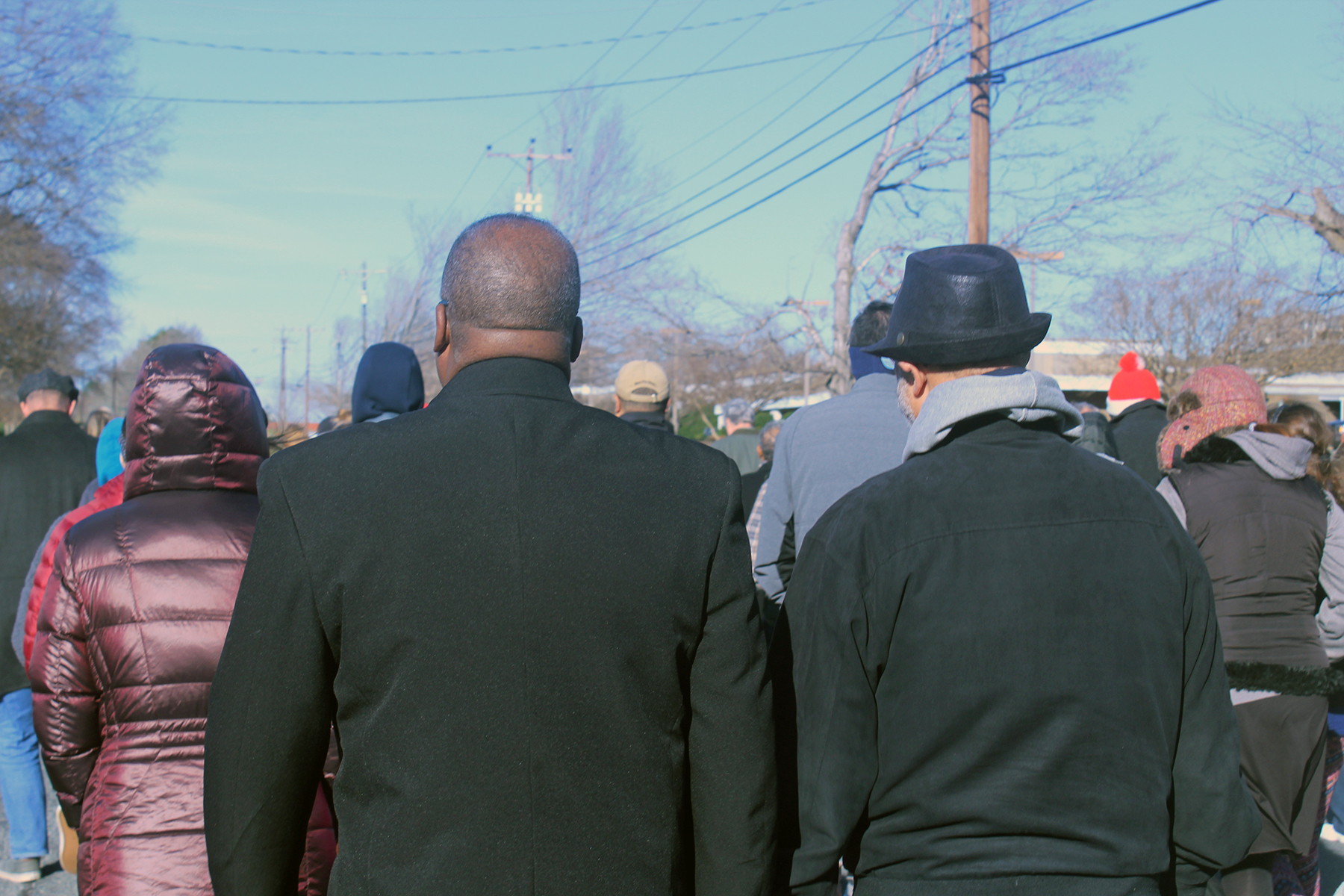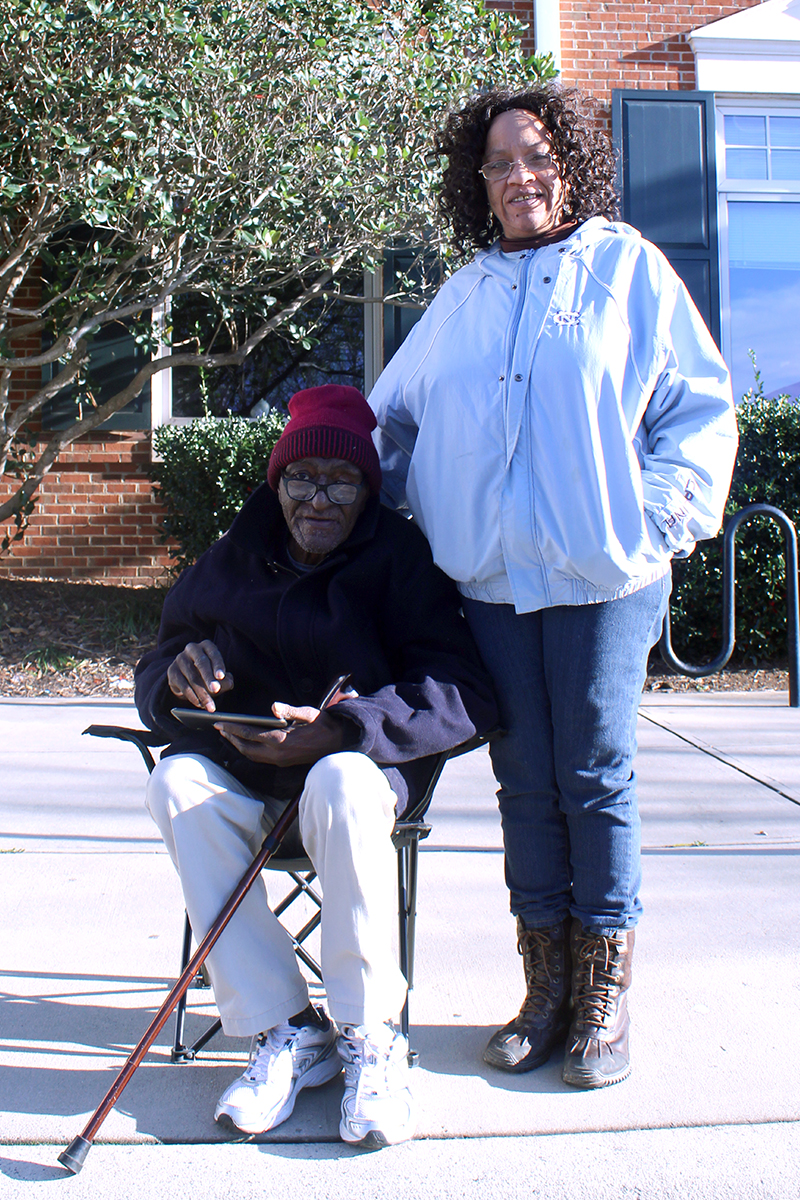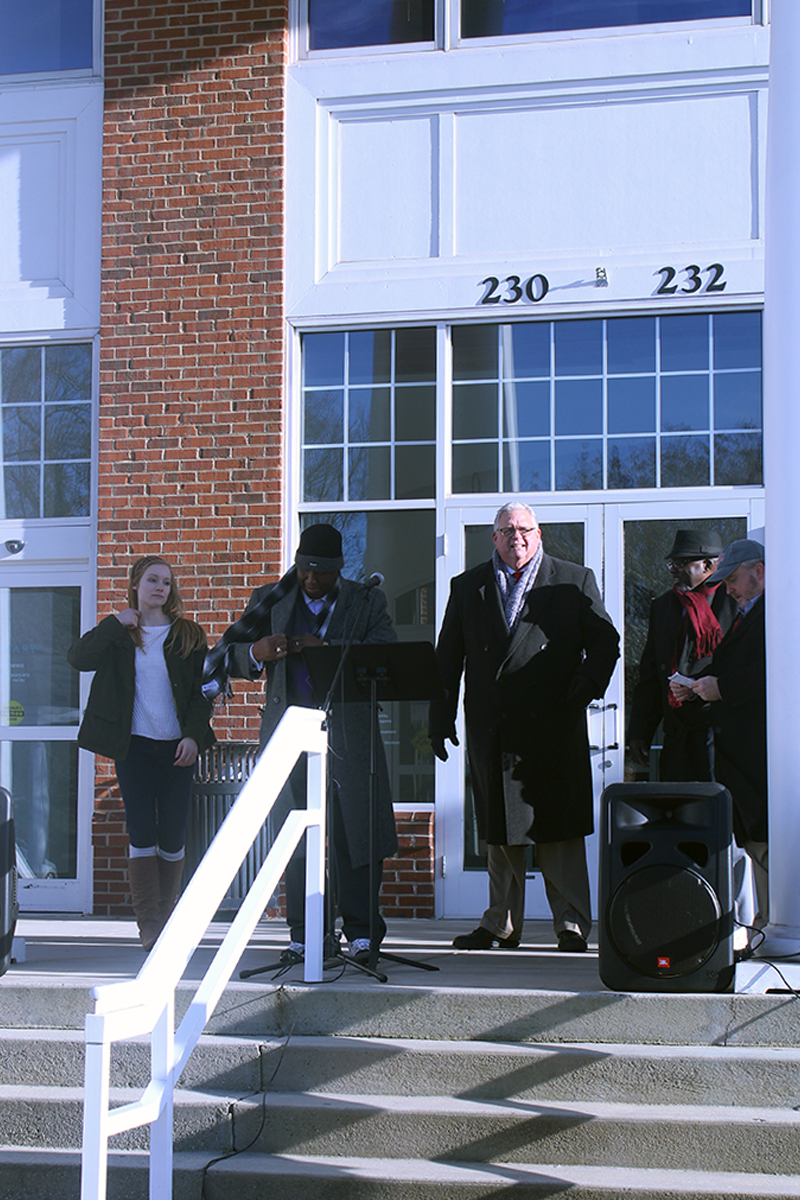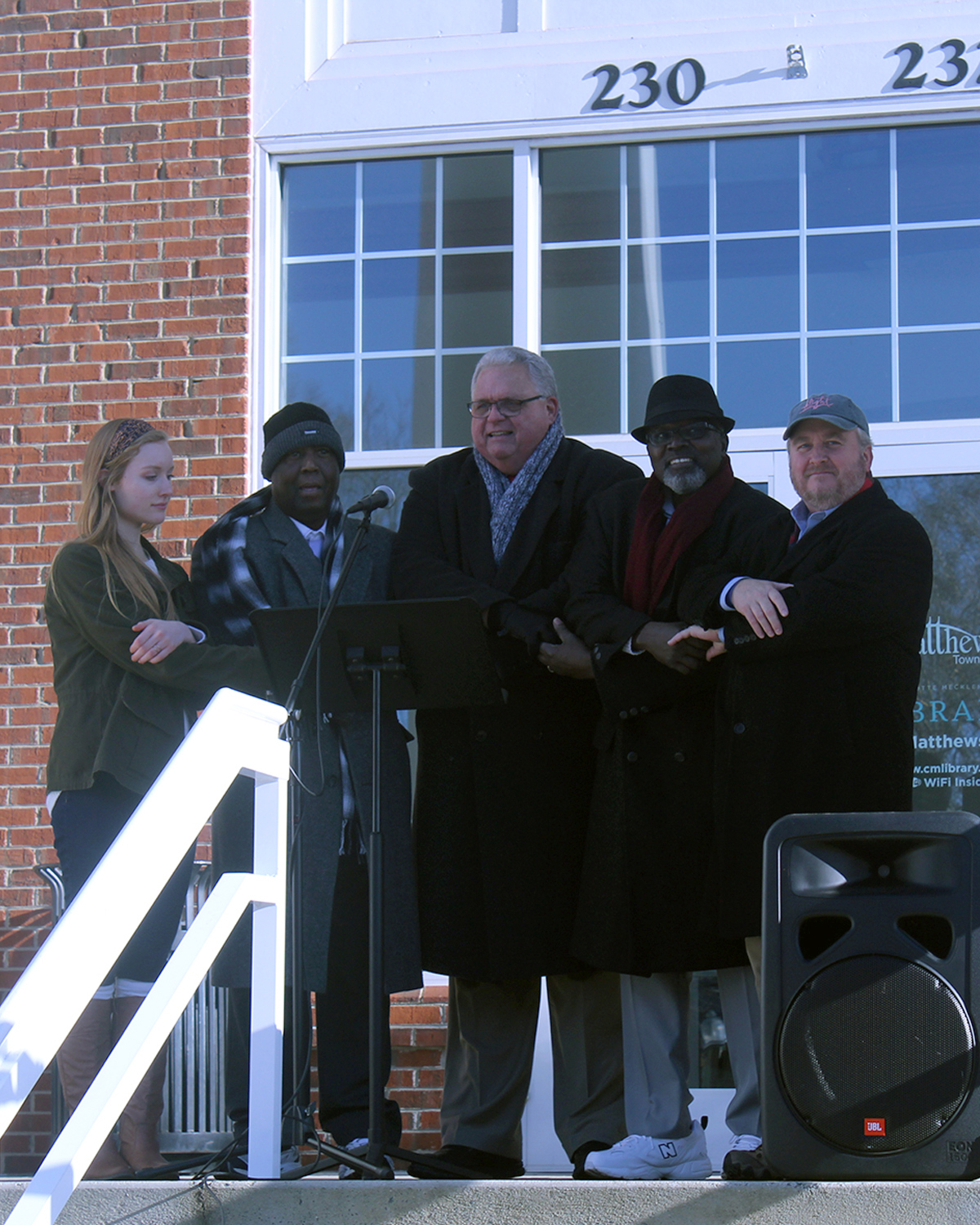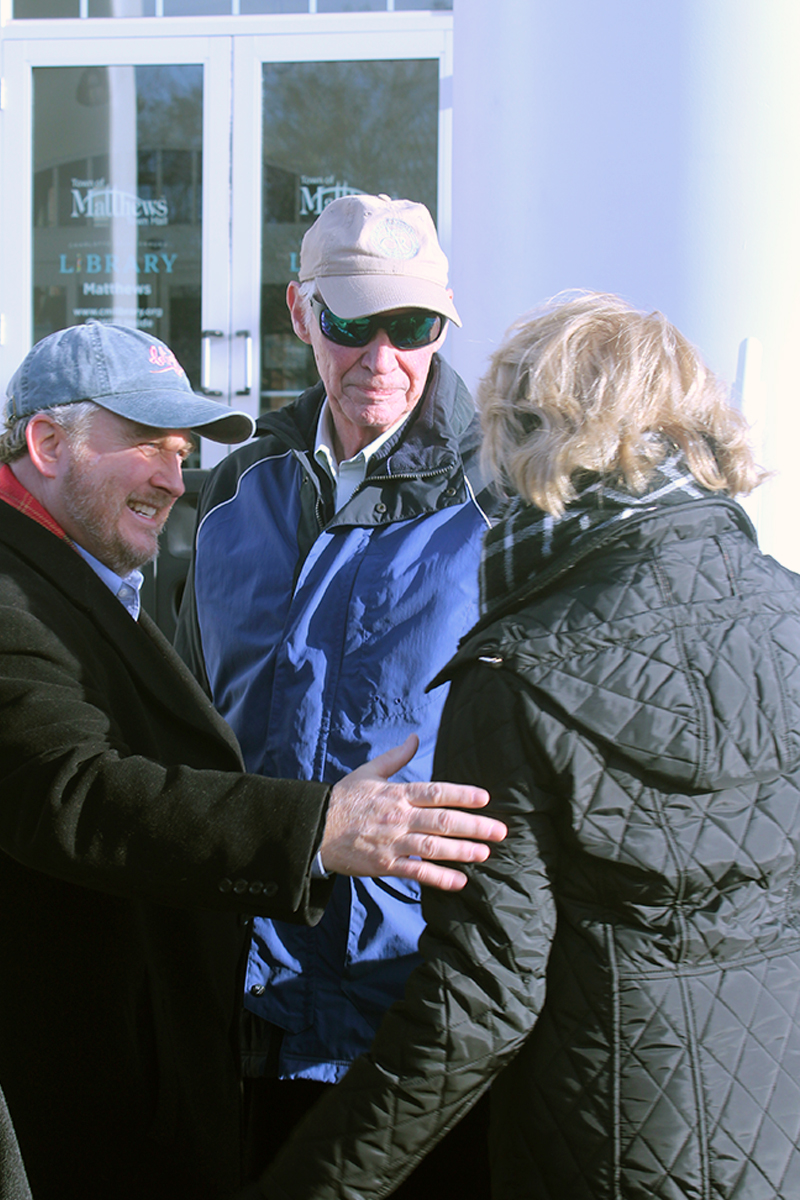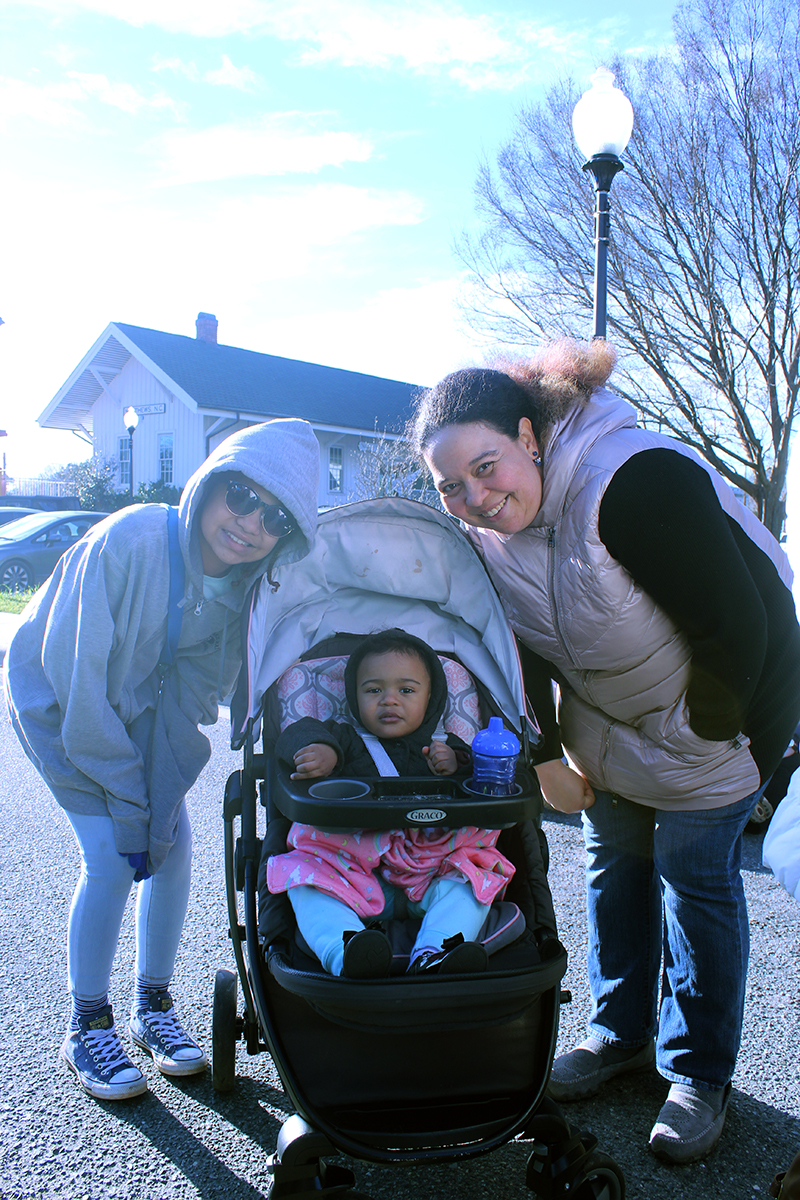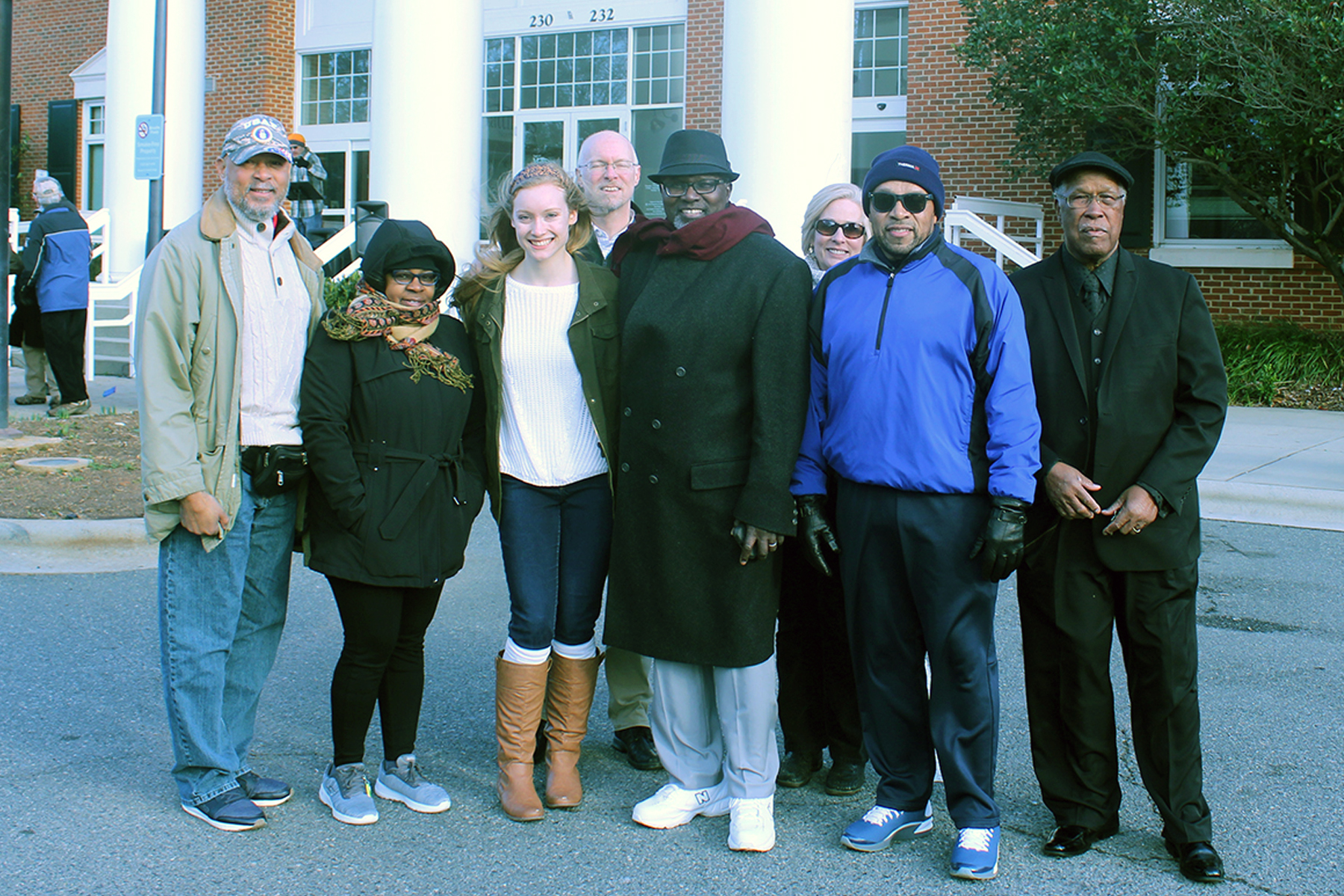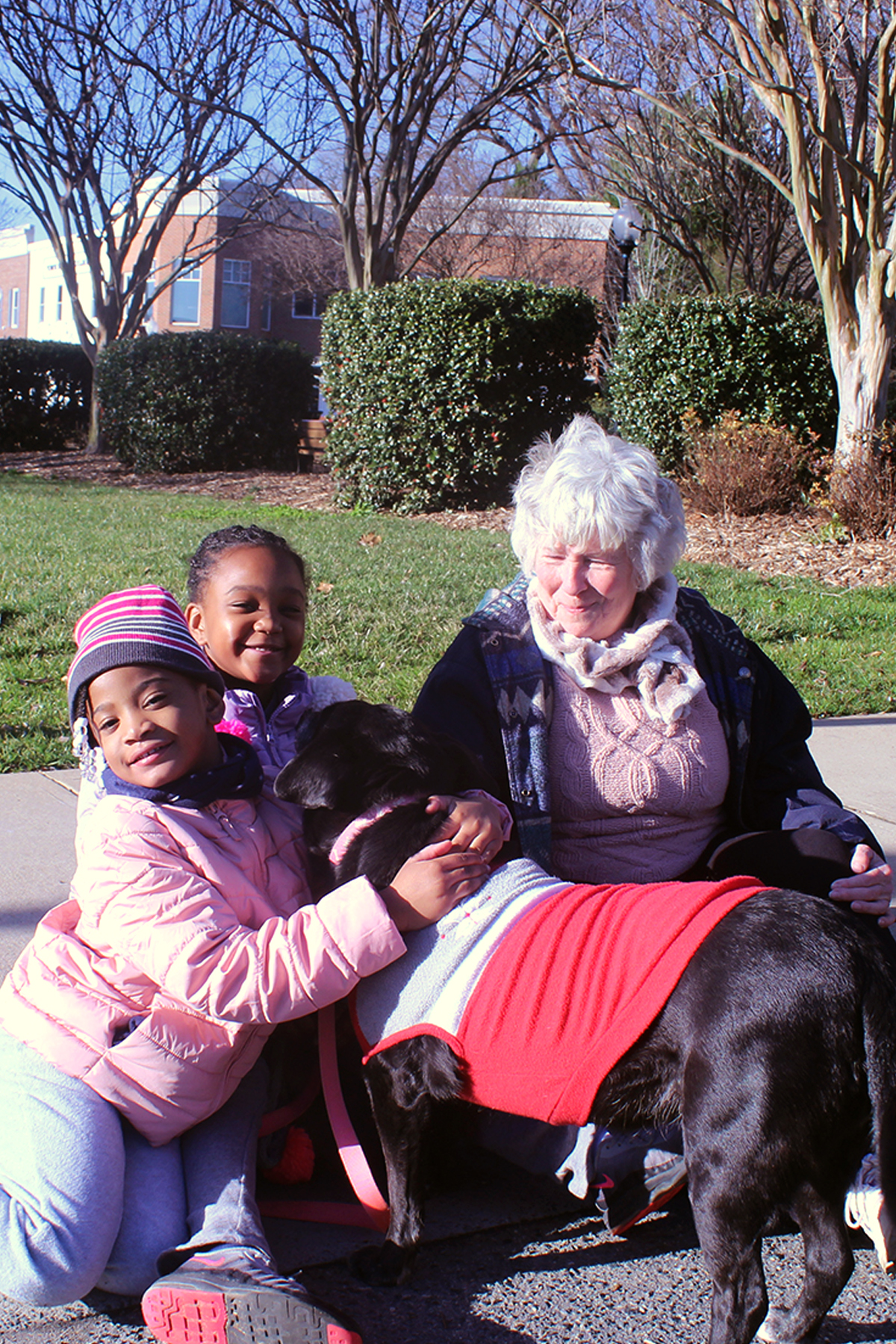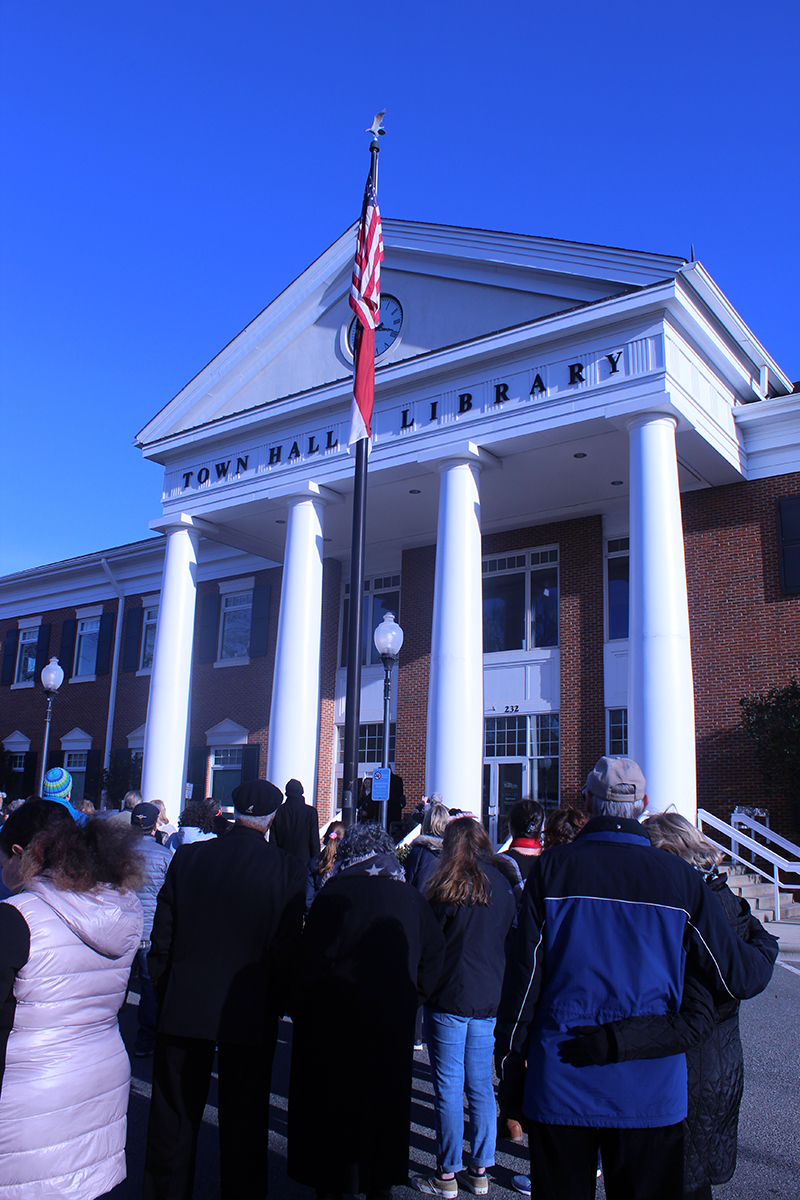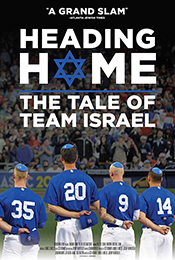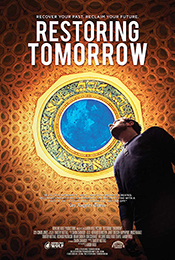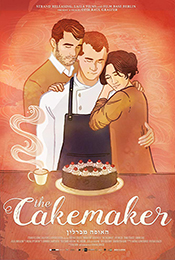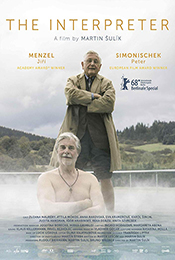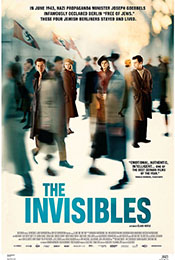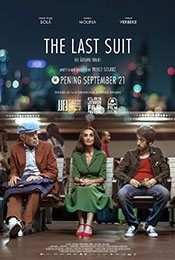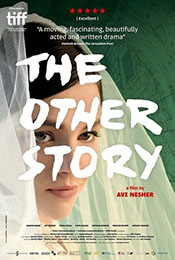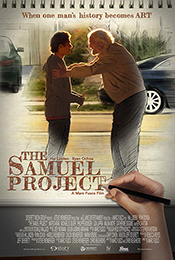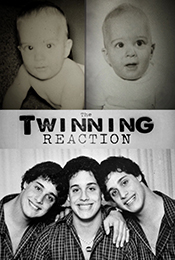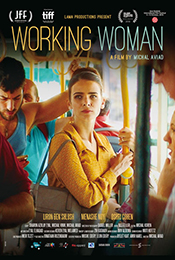From one woman’s nostalgia for Halloween TV specials of the past, a Matthews mascot was borne.
If you’ve traveled down Pineville-Matthews Road past the Elizabeth Lane intersection in the last few months, your attention might have been grabbed by a pop of color among the brush lining the road. What started as a surprise Halloween decoration has grown into a seasonal delight for the community, thanks to the efforts of a mystery decorator.
Ms. M (for Mysterious!) prefers her identity to remain a secret, but she shared how the decorating began. “I drive past that stump every day and probably did so many times before I actually noticed it. This was around Halloween, and as we rode past all of the sudden it hit me, that stump reminded me of something from Charlie Brown’s The Great Pumpkin and Disney’s The Legend of Sleepy Hollow, two cartoons that I loved as a child, and even now as an adult. I told my husband that lonely tree stump was just begging to be dressed up!” Her little idea became a family affair, as her daughter bought and decorated the original pumpkin that made the stump’s “head” and her granddaughters have helped her with some of the decorations.
There was a mishap post-Halloween when one of the branches came down. Ms. M continued to decorate it with just one arm and was surprised and delighted when a stranger reattached the branch with screws and a brace. “I knew it meant something to other people as well. I’d love for that person to know how appreciative I am for that gesture.”
Her efforts continued through Thanksgiving, Christmas, and Valentine’s Day, and if you drive past this month be sure to catch the stump’s St. Patrick’s Day garb.
Lori Kuhlman, a local runner who passes the stump regularly, has enjoyed the stump’s rotating outfits. “It’s so clever, and I hope this person is having as much fun dressing the tree as the rest of us are admiring it.”
For Ms. M, comments like those keep her going. Neighbors have stopped to thank her when she’s caught in the decorating act, and someone left a note at the tree, thanking her for making their day. “For me, that’s the purpose of the tree stump; to bring a little happiness, a bit of joy, and a smile.”If you’ve traveled down Pineville-Matthews Road past the Elizabeth Lane intersection in the last few months, your attention might have been grabbed by a pop of color among the brush lining the road. What started as a surprise Halloween decoration has grown into a seasonal delight for the community, thanks to the efforts of a mystery decorator.
“After Halloween, one of the branches either fell off or was broken off and I just fixed it up with one arm. When someone reattached the branch with screws and a brace, I knew it meant something to other people as well. I’d love for that person to know how appreciative I am for that gesture.”
Photo credits: Carolyn Trott (pumpkin) , Lori Kuhlman (pilgrim, snowman), Renee Garner (leprechaun)




